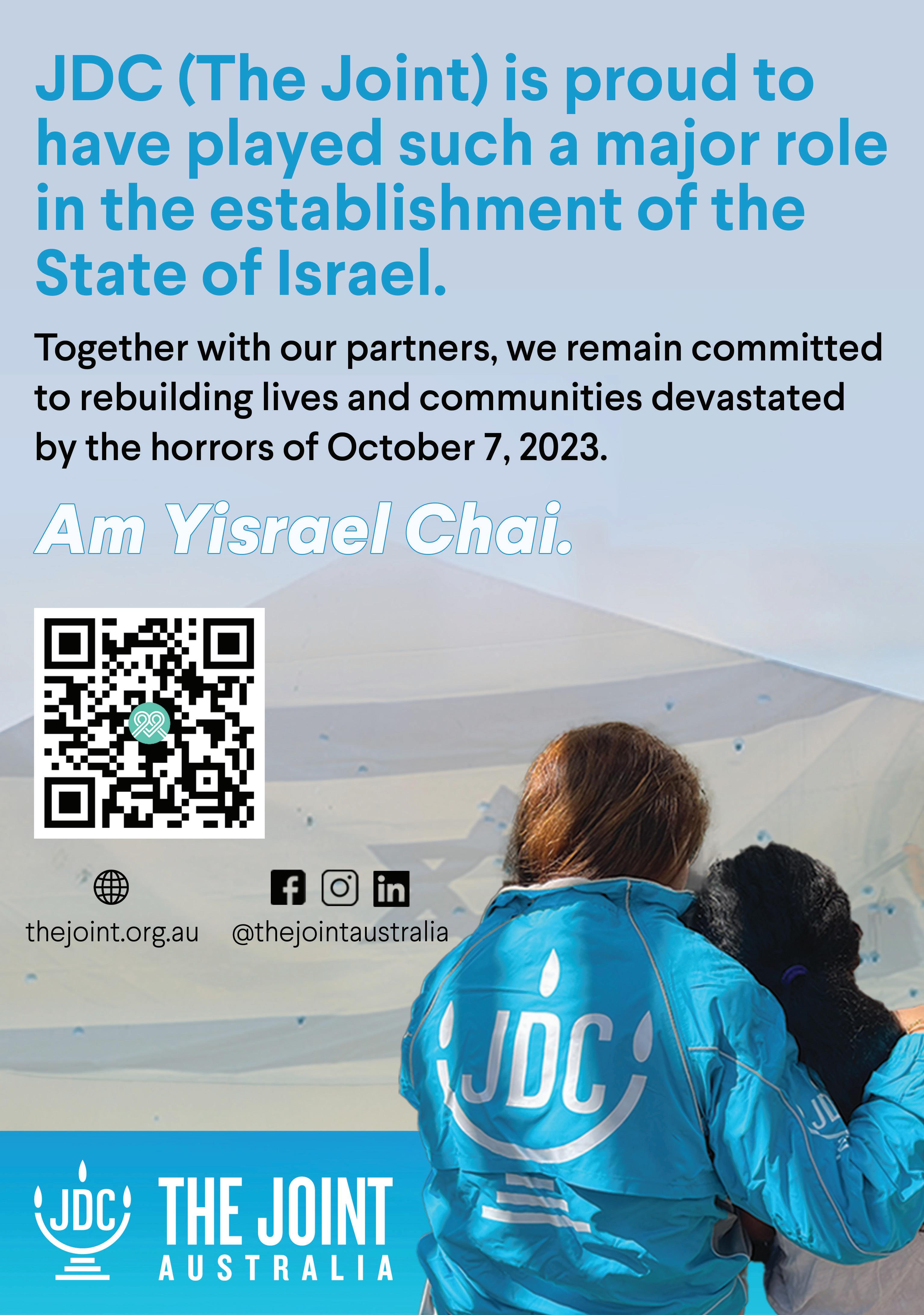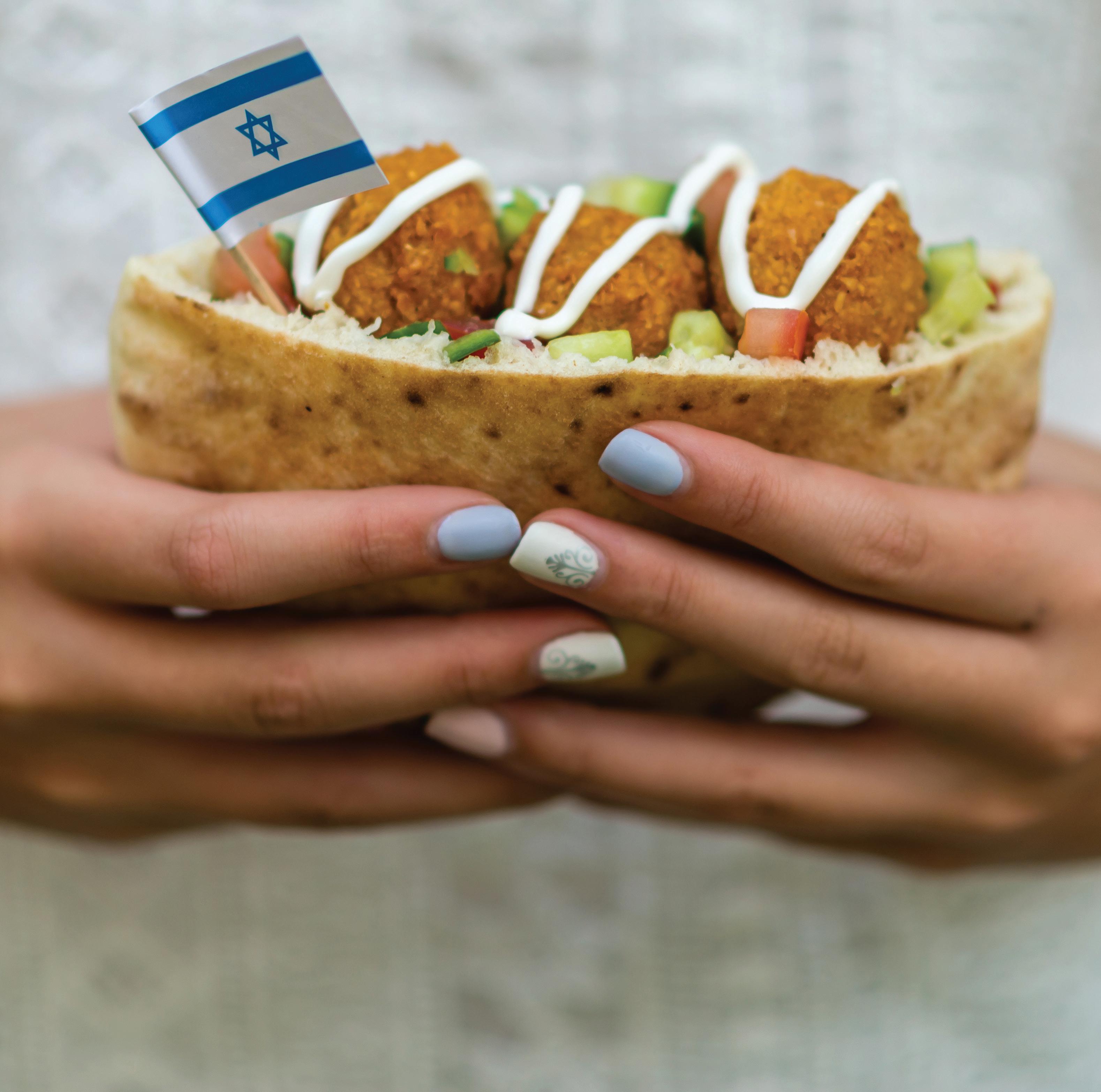




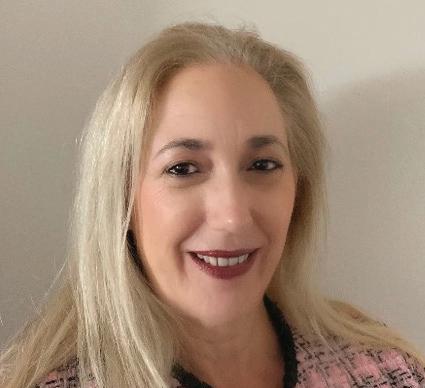
Yom Ha’atzmaut is the commemoration of the Israeli Declaration of Independence. It give me the opportunity to reflect on the psychological aspects of independence for us as individuals.
A psychological definition is: “the freedom from influence or control of others, encompassing self-sufficiency, autonomy and the ability to make decisions and take responsibility for one’s actions. It’s a key developmental process that is crucial for developing a sense of self and overall wellbeing”.
Let us consider what some of the concepts in the definition mean in more detail.
Self-sufficiency is the ability to care for oneself and to meet one’s own needs without relying on others.
As much as we may want to be, we are not superheroes and, therefore, we are not skilled at doing everything. Hence, we may need to get assistance from others who have the expertise, skill or mobility that we lack.
For example, I may not have the skill to service my car and as such I will employ a mechanic to do that job. Or I may be infirm and lack mobility, which means that it is important to have someone to help me with grocery shopping and household chores.
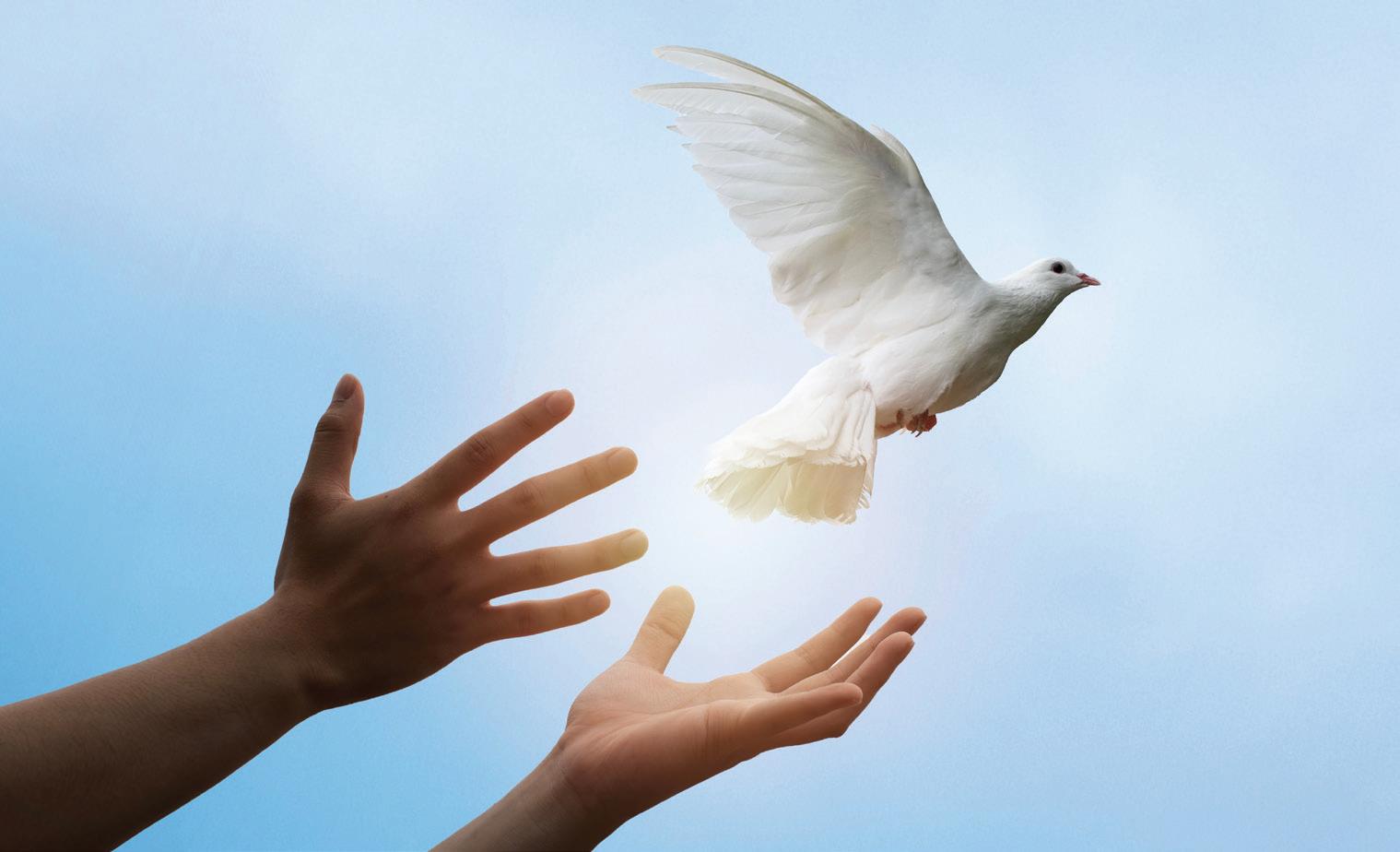
Autonomy is the capacity to make our own decisions and to act according to one’s will. Again, it is necessary to consider that there may be a time in life when a person does not have the capacity for autonomy and therefore having a power of attorney in place is vital.
How about autonomy in a work environment? Has a boss asked you to complete work that is outside your skill level or scope of practice? In this case, you should speak up and state that in this area you require teaching or supervision, in order to gain your autonomy.
Responsibility is the taking ownership of one’s actions and the consequence of those actions. In other words, being accountable. It is very easy to deny, blame
and make excuses if something goes awry. An independent person will stand up and own their actions. Unfortunately, most children learn the statement ‘it wasn’t me’ very early in life. Often as we move into adulthood, we don’t stop using that statement or a variation of it.
There are two key types of independence. Firstly, intellectual independence. Becoming an independent thinker doesn’t mean rejecting mainstream ideas or embracing contrary viewpoints for the sake of it. Instead, it involves cultivating a disciplined mind that questions assumptions, seeks diverse perspectives and engages in continuous learning.
Some ways to be an independent thinker are to become curious. Don’t stop
learning. Be a critical thinker. Be willing to debate with respectful dialogue. Engage in self-reflection. Check the facts. Be willing to admit when you are wrong. Think outside the box – become a creative problem solver. Trust your judgment.
Achieving intellectual independence is an ongoing, lifelong process that is both empowering and rewarding.
Our second form of independence is emotional. To be emotionally independent, we need to learn to value ourselves and to like ourselves. If we can achieve this, we can then have healthy interdependent relationships and interactions with others.
Emotional independence is the ability to regulate your emotions and still feel good about yourself, even when difficult situations present themselves. It is also the practice of regulating emotions without seeking constant approval, attention and validation from another person or persons.
To maintain emotional independence, we need to practice mindfulness, selfcompassion, self-validation and letting go.
Tthe author of The 7 Habits of Highly Effective People, Stephen Covey, has the final say: “Every human has four endowments – self-awareness, conscience, independent will and creative imagination. These give us the ultimate human freedom
Anne-Marie Elias is a psychologist in clinical practice for 25 years.
8. Pathfinder, e.g.
9. Was nervously active, in a way
10. Home of the Beta Israel, once
11. A daughter of Zelophehad
12. Insta chats
20. Joan ___
21. Protagonist of the "Street Fighter" games
24. Kind of designer
25. USD alternative, in the Middle East
28. ___-de-dah
29. Org. fining polluters
31. No later than, for short
32. Puck org.
33. Truly grand
34. Russian orbiter of old
35. Lyrical work
36. Agurot, e.g.
37. Honey Graham ___ (Quaker cereal)
38. Handle crudely
41. Got full, say
42. Like some arithmetic
43. One with a cure
44. Part of many a tefila
45. Part of the Ten Commandments?
Uris novel, with "The" 41. Tefila said several times a day
44. Very good, slangily 47. Honeybun
49. Eric the Red, for one 51. Tefila said several times a day
54. "Swan Lake" skirt
56. Alka Seltzer sound
57. Israeli city that's 43,560 square feet? 58. Confession words
46. Remove, in a way
48. Two former Israeli Prime Ministers
50. ___ Chayim (daily guide)
52. Sefer or Matza
53. Some hoppy brews, for short
54. You generally don't leave one in Australia
55. Musician Davidi
Next week, together with Jews the world over, the Victorian Jewish community will gather to mark Yom Hazikaron.
Since we came together for this sacred day of remembrance last year, the number of victims mourned will have increased by more than 400 – over 360 who fell while serving in the IDF and more than 40 others whose lives were cut short in acts of terror.
With October 7, 2023 still casting a shadow over us and with dozens of hostages still held in Gaza, the annual commemoration, hosted by Zionism Victoria, will be especially moving.
On The evening of Tuesday, 29 April, the spotlight will fall on members of our community who have lost loved ones since the creation of the State of Israel in 1948. Recounting their stories, they will light candles in honour of their fallen relatives and friends.
A particular theme of this year’s tekes will be on the legacy of the victims – how they and their spirit live on, for example through charitable endeavours or sporting events named in their honour. Or simply through the example they set through the life they led and the impact that continues to have on their families and those who knew them.

Zionism Victoria executive director
Zeddy Lawrence said: “One year on from last Yom Hazikaron, we are still praying for the return of our hostages and for the wellbeing of our brothers, sisters, cousins and children who are scurrying for shelters and fighting on the frontline for Israel’s very survival.
“Honouring those who have fallen is not about history, it’s about the here and
now. Israel only exists because of those who made – and continue to make –the ultimate sacrifice. It’s for this reason that Yom Hazikaron is the most moving event in the communal calendar and I would urge each and every member of our community to join us in remembering and recognising them and the price they paid.” Two days after Yom Hazikaron, on Thursday, 1 May, the mood in Melbourne
will become a little lighter as thousands of us come together to celebrate Yom Ha’atzmaut.
Zionism Victoria’s annual family festival will feature an impressive line-up of live musicians, DJs, rides, an arcade zone, kosher food vendors, community stalls and, for the first year, a shuk, with all manner of arts and crafts, and jewellery and Judaica on sale.
Mr Lawrence said: “While October 7 and the hostages are still very much in our hearts and minds, and while the scourge of antisemitism continues to take a toll, this is a chance for us to stand tall as Jews, declaring we will not be intimidated and we are proud of Israel and its incredible contributions to humanity.
“This is a chance to come together as one people, Am Echad, and celebrate the miracle that is Israel, and the miracles it performs every day.”
Yom Hazikaron is at 7pm on Tuesday 29 April. Secure your seat at https://events. humanitix.com/yom-hazikaron-2025 Yom Ha’atzmaut is from 4pm on Thursday 1 May. Register at https:// events.humanitix.com/yom-haatzmaut-77x

RABBI SHALOM SCHWARTZ COURTESY: AISH.COM CONSIDERED OPINION
Beyond defending Israel and Jews, is there an end in sight to this eruption of world-wide antisemitism?
Antisemitism is the oldest, most persistent, and most dangerous hatred in history. It is not only ancient – it is uniquely virulent, violent and, as we’ve seen in every generation, including our own, potentially genocidal.
As the Passover Haggadah says: “In every generation, they rise up to annihilate us.”
Since October 7, 2023, this hatred has surged again with chilling clarity. The stated goal of Hamas, Hezbollah, Iran and their proxies is nothing less than the annihilation of the Jewish state. And across the globe, chants like “From the river to the sea” echo that same call.
Jewish communities, Israel, and supporters around the world are mobilising to defend against this onslaught – politically, legally, militarily and in the media. But where is the conversation about solving antisemitism altogether?
Many people believe that antisemitism is inevitable. Historians describe it as a social or psychological disease with no cure. Religious tradition echoes this with the Talmudic line: “Esau hates Jacob.”
So the common assumption becomes: there is no solution. We must defend ourselves, yes. But to end antisemitism? That sounds naive, even delusional.
And yet, I believe there is a solution. A moral and spiritual one.
This belief is at the heart of our film Tragic Awakening: A New Look at the Oldest Hatred. And it begins with a diagnosis that challenges prevailing assumptions.
Antisemitism is not essentially a disease; it is ultimately a choice. It's a spiritual phenomenon that must be defeated by moral and spiritual clarity and choice.
The Talmud (Shabbat 89a) explains the source of antisemitism. It teaches that when God gave the Torah to the Jewish People at Mount Sinai, hatred (sina in Hebrew) descended to the world. The root of antisemitism, or sinah (hatred), is Sinai.
At Sinai, the Jewish people received a divine mission: to carry and live by a moral code and to be a light to the nations. This covenant, received in unity, is the foundation of our identity. The world’s hatred of Jews is not just baseless prejudice. It is, at its root, a rejection of that mission and the moral responsibility it carries.
That means the path to ending Jew hatred is not only in exposing lies or winning battles in the court of public opinion. It begins with us – with Jewish unity, clarity of purpose and reconnection to our covenant with God.
Three key insights guide this vision:
• When we are divided, we are vulnerable. Internal strife weakens us and invites external attack.
• When we lose sight of our national purpose, we become fragmented and confused about who we are.
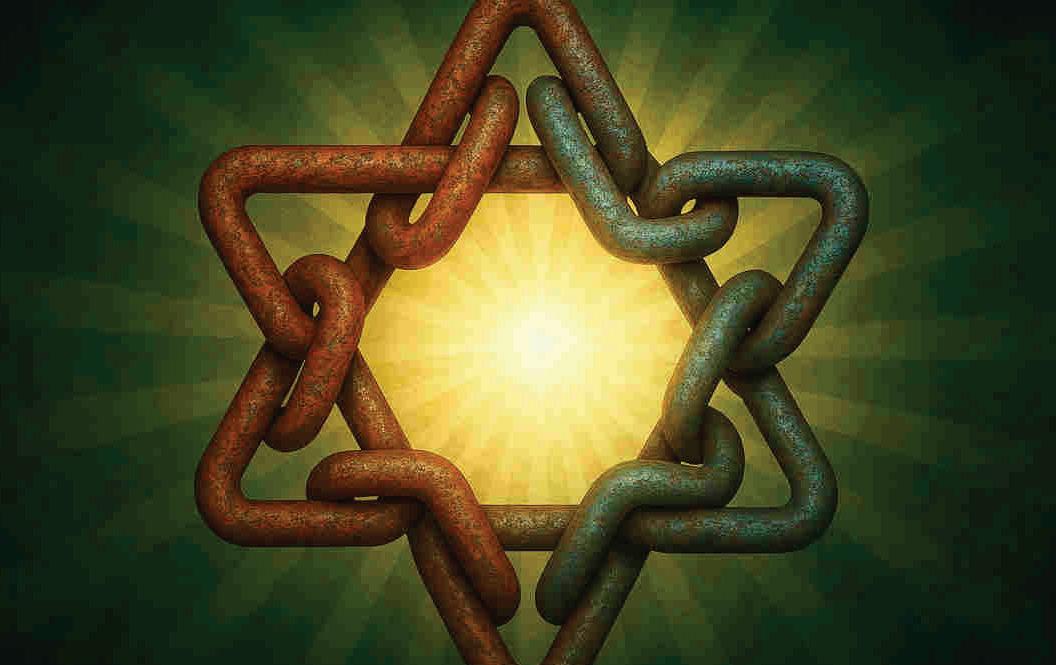
• When we disconnect from God, we lose the spiritual confidence and clarity needed to face and defeat evil.
To address antisemitism, we must repair all three.
We need to unite as a people, not by erasing our differences, but by committing to a shared destiny. Without that unity, we will continue to be reminded by our enemies that we are one family, whether we act like it or not.
We must embrace our identity, not just as a religion or a culture, but as a people with a covenantal destiny, with the Land of Israel as its focal point.
And we must confront the spiritual discomfort that modernity has bred. As Elie Wiesel wrote: “You can be a Jew with God. You can be a Jew against God. But not without God.”
October 7 was a wakeup call. With illusions shattered, we are being called to remember who we are and why we are here.
Since the root of Jew hatred is Sinai, then our alignment with Sinai – with our mission, values, and God – is the antidote.
The Jewish people are not here to convert the world to Judaism, but to bring the world to universal Godbased morality, as expressed in the Ten Commandments.
That is our light. And it is precisely that light that has always drawn the darkness against us.
But that mission is also our hope. By fulfilling it, we turn the very cause of antisemitism into its cure.
The prophets spoke of a time when this vision would be realised – a world redeemed by moral clarity and divine truth.
Will it come all at once, with the arrival of the Messiah? Perhaps. But maybe, like the return to Israel, it will unfold in stages, with setbacks and progress, shaped by our choices.
The more we live our mission, the more the moral and spiritual battle will tilt in our favour. Evil weakens when our moral might is strengthened. Our greatest weapon is imbuing all fronts – military, political and cultural – with moral and spiritual clarity.
With God’s help and our courage to choose purpose over fear, we can end this ancient hatred and shine a light of truth and peace to all humanity. “In every generation, they rise up to annihilate us… and the Holy Blessed One saves us from their hands.”
How many common words of five or more letters can you spell using the letters in the hive? Every answer must use the centre letter at least once. Letters may be reused in a word. At least one Jewish word will use all seven letters.
Proper names and hyphenated words are not allowed. Score one point for each answer and three points for the phrase that uses all seven letters.
Rating: 13 = Good; 17 = Excellent; 20 = Genius
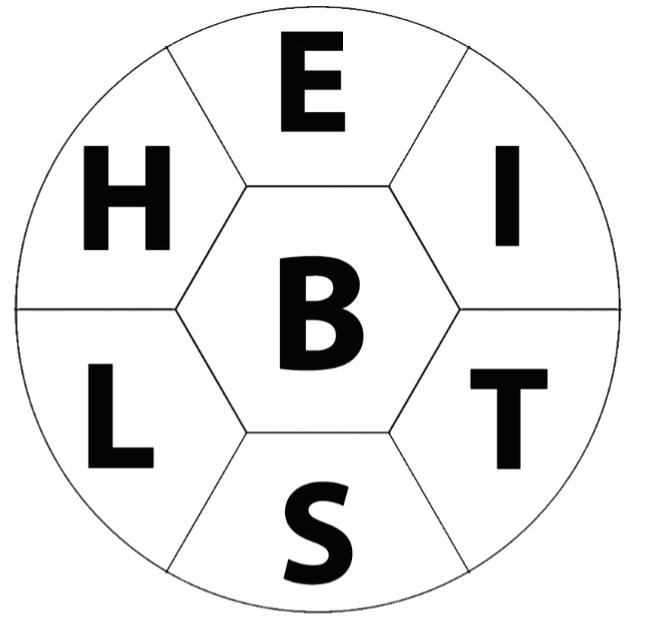
ANSWERS PAGE 18
MAUREEN BARTEN PRESIDENT PJV AROUND
Late last month, PJV hosted His Excellency, Ambassador of Israel to Australia, Amir Maimon at a community leaders’ meet and greet. The Ambassador joined representatives from our five shuls, including a dynamic group of young adult leaders, for lunch at Temple Beth Israel. Mr Maimon had the opportunity to meet each of our attendees and to become a little more familiar with the Progressive leadership team here in Victoria. Introducing The Ambassador to the cohort of young adults was a highlight and a very proud moment because it showcased their active community involvement.
Speaking candidly with us, he welcomed questions on any topic. He expressed his sympathies and concern for those in the diaspora living with antisemitism, explaining that living in Israel antisemitism is a non-issue.
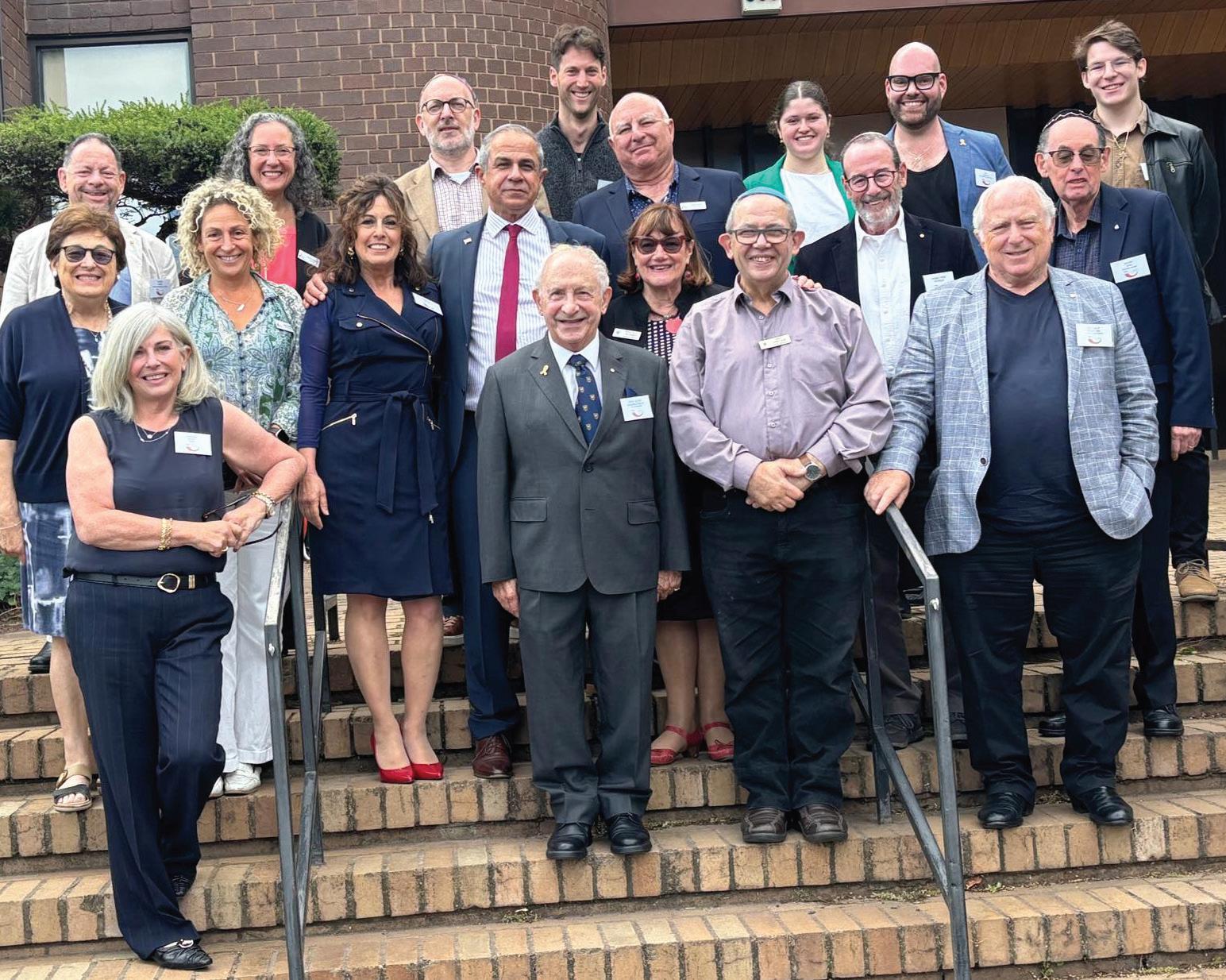
your unwavering dedication to Jewish life, social justice and your strong connection to Israel. PJV stands as a vital pillar of Jewish life in Victoria, upholding the principles of inclusivity, justice and steadfast support for Israel.
“In the face of such darkness, the resilience and solidarity of Jewish communities worldwide have been a source of strength. PJV's steadfast support, its dedication to Jewish continuity and its unwavering commitment to the values we hold dear are a testament to the enduring power of our people.
Your advocacy, compassion and tireless work for a better future reflect the very essence of what it means to be Am Yisrael.
“Progressive Judaism has always played a crucial role in shaping a dynamic and inclusive Jewish future. The impact of your work extends far beyond Victoria, strengthening the bonds between Israel and the diaspora, and ensuring that Jewish identity remains vibrant for generations to come.
It was a memorable afternoon – one that left everyone feeling enriched and very grateful. In a letter to PJV shortly
With a background in history, the Ambassador said that the situation in the Middle East has provided the excuse and a banner under which the flag of antisemitism flies today and has over the millennia. He impressed upon us the need for resilience and that through the darkness over the ages and around us today we have always and must continue to persevere with hope, determination, grit and vision. His warmth and candour were most welcoming and made for a robust question and answer session.
after his visit, the Ambassador offered these words: “I have always deeply appreciated the strength, commitment and values of Progressive Judaism Victoria.
However, after meeting with members of PJV … I left even more inspired by
“Always remember – the glass is half full and together we will keep building a better future.”
We sincerely thank Ambassador Maimon for his enormous generosity of time and energy. It was a standout moment for all of us. Am Yisrael Chai!
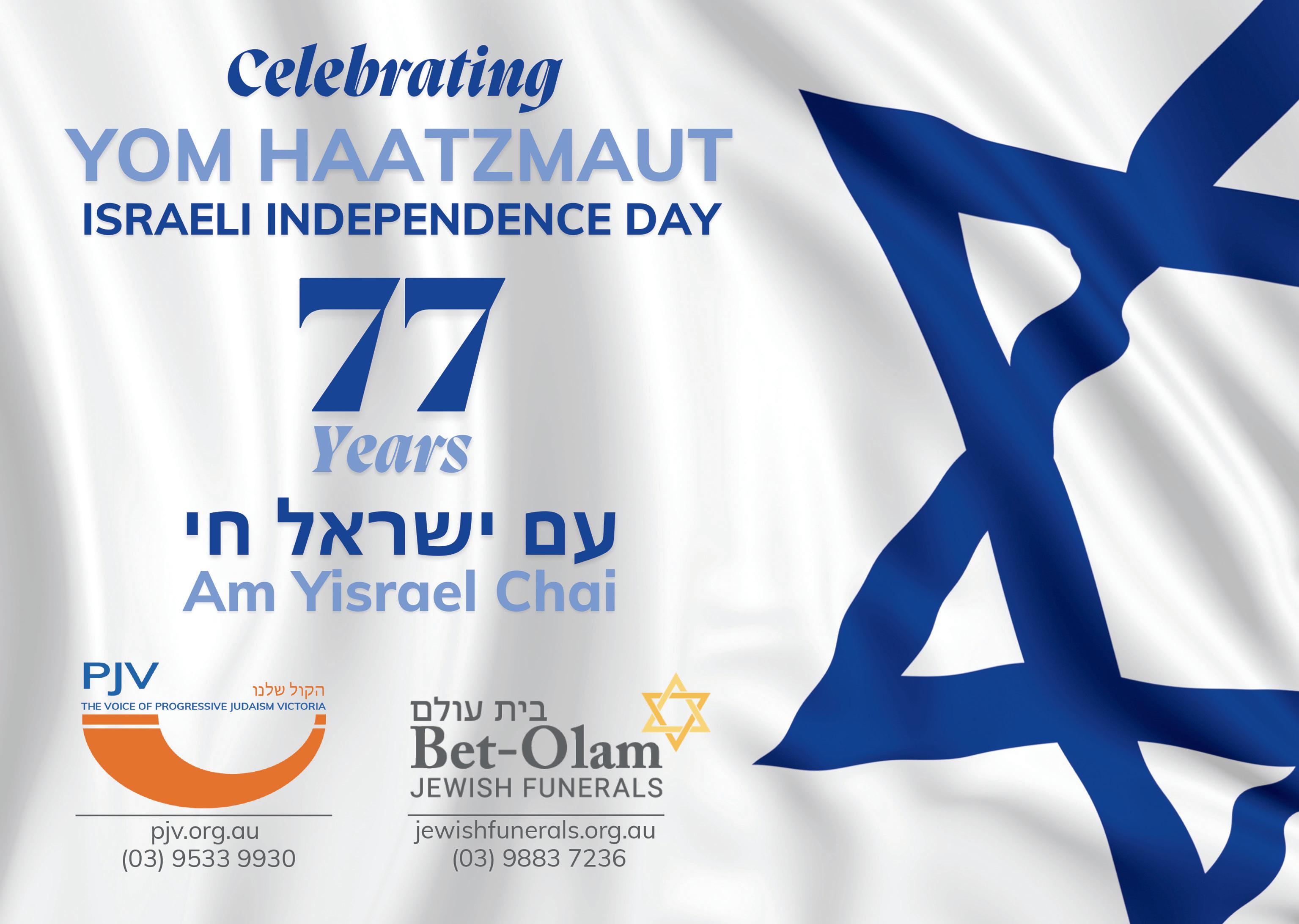
‘It will only work together. Alone it won’t work’
These were the words of Major Jamal Abbas, a 23-year-old Israeli-Druze IDF commander who tragically fell in Gaza on November 18, 2023. Today, his words are forever immortalised in a song, Rak Beyachad by Ari Hill and Aviel Gracher, timeless and forever. What is important about this is not that it was written in honour of a hero, as many songs are, but that it was written by Orthodox Haredi Jews for a fallen Druze soldier. I was first exposed to this phrase by the older brother of Major Jamal Abbas, IDF soldier Gideon Abbas, the only Druze member of the ISRAEL-is 2025 delegation to Australia. ISRAEL-is is an Israeli nongovernment organisation whose goal it is to improve Israel’s global image through people-to-people advocacy. Gideon, along with the rest of the delegation, Odelia Bayer and Gilad Bentov, chose to spend the better part of a fortnight touring our country to share their unique stories. Despite being met with protests, boycotts and lies, they remained determined and unafraid. When pro-Palestinian groups at The University of Sydney tried to cancel their event, they fought for it to go ahead. When they were mistaken for Palestinian speakers because of their darker skin or when speaking Arabic, they held fast to their Israeli identities and educated their acquaintances about the diversity of Israel.
When I first heard Gideon speak, he spent almost his entire address relaying his brother’s story, rather than his own. By the end of it, the audience was begging him to share more of his own life, which he humbly declined. The goal of his talk was clear: it was not about flattering his ego or simply honouring his brother’s memory, rather about tearing down the “apartheid” claim against Israel, using his family’s history as proof. The Abbas family comes from a Druze-Arab town in Northern Israel named Peki’in, where they enjoy the same rights as every other Israeli citizen.
His family has a long history of proudly serving in the IDF, as do many Druze in Israel. Gideon’s speech ended with a poignant moment in which he spoke about his brother’s death. Major Jamal Abbas was with his fellow officer and close friend, Staff Sergeant Shachar Fridman, an Orthodox Israeli Jew, when they were killed by Hamas terrorists. Despite being from seemingly different worlds, they wore the same uniform, fought for the same cause and died together trying to save others.
‘It doesn’t matter where you come from. We are united for one goal’
These were the words of Odelia Bayer, a Christian-Israeli of German descent, when I spoke with her about her life. Her grandparents were sent to Israel by a German-Christian organisation after the Holocaust to help build a guesthouse
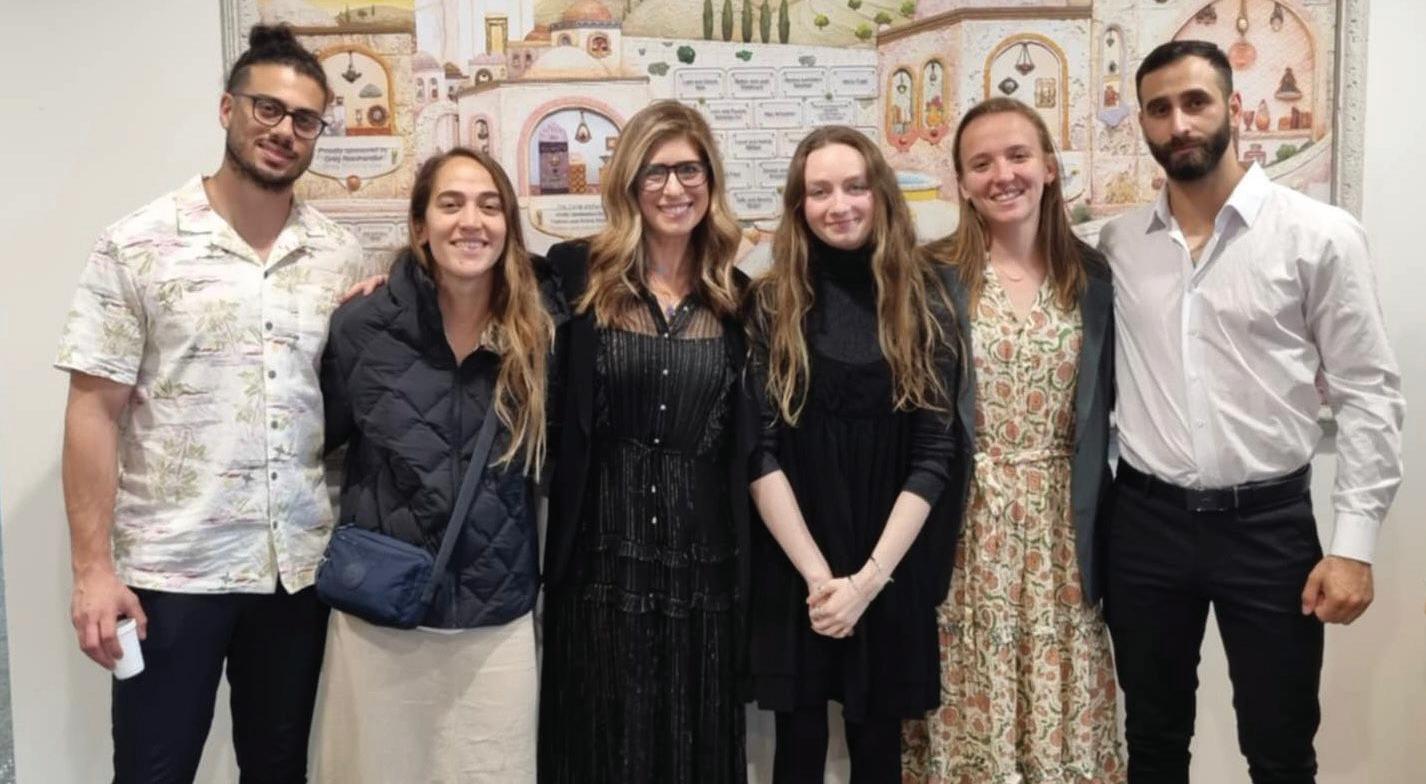
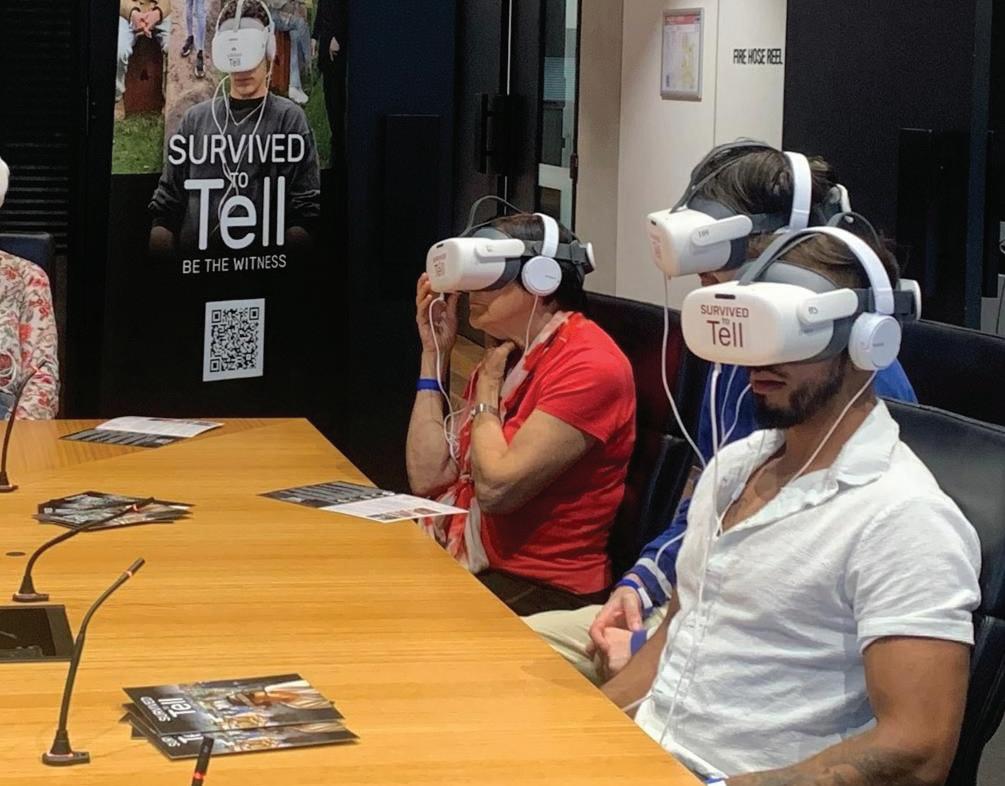
and eventually a nursing home for Holocaust survivors. Her parents met there, lived there and she and her siblings grew up there. Odelia served her mandatory service in the IDF, as every other non-Arab Israeli citizen is obligated to do, then chose to continue serving a total of five years in the search and rescue unit. After October 7, her unit was sent to recover bodies and remains from beneath the rubble in various locations across Israel. A terrible task for any 23-year-old to have to perform. Like Gideon Abbas, she too lost a younger brother to Gaza.
He was injured in December 2023 and after a few days he tragically succumbed to his wounds. His name was Urija Bayer and he was only 20.
When Odelia spoke of her brother, she spoke of his kindness and caring nature but mostly of her Christian faith and how it helped her to endure the pain of losing a sibling. Thousands of Israelis attended his funeral and, though they are Christian, her family ended up
sitting shiva (a unique manifestation of living in a Jewish majority country). Since completing her IDF duties, Odelia has chosen to share her story as a ChristianIsraeli, so that the world understands that each Israeli citizen is essential to the future of the country and must be united in the fight because, as she said, “we don’t have the privilege to look away”.
‘If you tell the truth, you don't have to remember anything’
These were the words of Gilad Bentov, the Jewish-Israeli delegate of ISRAEL-is. This quote, originally from Mark Twain, is a perfect answer to the apparently impossible question how do we fight antisemitism?
Gilad was born in Israel but spent 14 years of his life in Canada. He spoke of witnessing the rise of “woke” culture in Canada from something wellintentioned to something extreme and dangerous.
Never feeling at home there, he moved back to Israel in his 20s. Today,
he fights antisemitism and anti-Israel rhetoric online and through activism by confronting people with the story of his grandfather, whom he calls a “Palestinian Jew”. After leaving Canada, Gilad realised that many in the West don’t care about the facts. So, he chose to respond in a more personal way, by sharing his lived experience and allowing that to be the truth. Nothing illustrates this attitude better than the Survived To Tell virtual reality experience that accompanied the ISRAEL-is delegation throughout their Australia tour. Survived To Tell explores the stories of five diverse Israelis and their survival stories on October 7. It is a way for us to bear witness while coming face to face with the reality of their experiences. In one, you see the piles of burnt-out cars from the Nova festival, with survivor Mazal Tazazo standing next to them and pointing out her own shot up vehicle. In another you see survivor and released hostage Ofir Engel standing in front of the destroyed house in Kibbutz Be’eri that he was kidnapped from. Seen more than 30 million times, the truth of October 7 is raw and real.
For many Jews around the world, it is easy to despair, and we often do, about the seemingly insurmountable fight we have ahead of us. It’s a fight we’ve been combatting for centuries and in every generation it rears its hateful head in a new and twisted way.
But sometimes what it takes to move forward is for someone outside the Jewish community to remind us that while it may have been our fight alone for the past 3,000 years or so, it’s not so anymore. Our fight is now the same. We fight for our friends and family, we fight for our freedom and we fight for our future. Only together.
In-depth interviews with the ISRAEL-is delegation will be aired on The Dignity of Difference on J-AIR 88FM in May.
Michaela Bercu, 54, from Tel Aviv is one of the most powerful names in the world of modelling and fashion. She began modelling at the age of 13 and developed an international career that led her to become Israel's first supermodel. Over the years, Bercu has appeared on the cover of major magazines. She was the first Israeli to appear on the cover of Vogue. Amidst the glittering campaigns came a turning point four years ago, when she began volunteering at Magen David Adom. "It's never too late to do things you love. MDA is something that has always interested and attracted me. I come from a family where my father was a pharmacist, so the world of medicine has always been a part of my life," Michaela says.
Recently, Michaela, who began her career at MDA as an emergency medical technician, accomplished a goal she set for herself by completing the MDA paramedic course. "I always use the phrase 'dreams are destined to come true'.
Although the paramedic course is difficult and challenging, there is nothing more satisfying than completing it and helping people. After I received the uniform with the orange stripe, I told everyone that I wouldn’t take it off. I even sleep with it on at night. It’s a
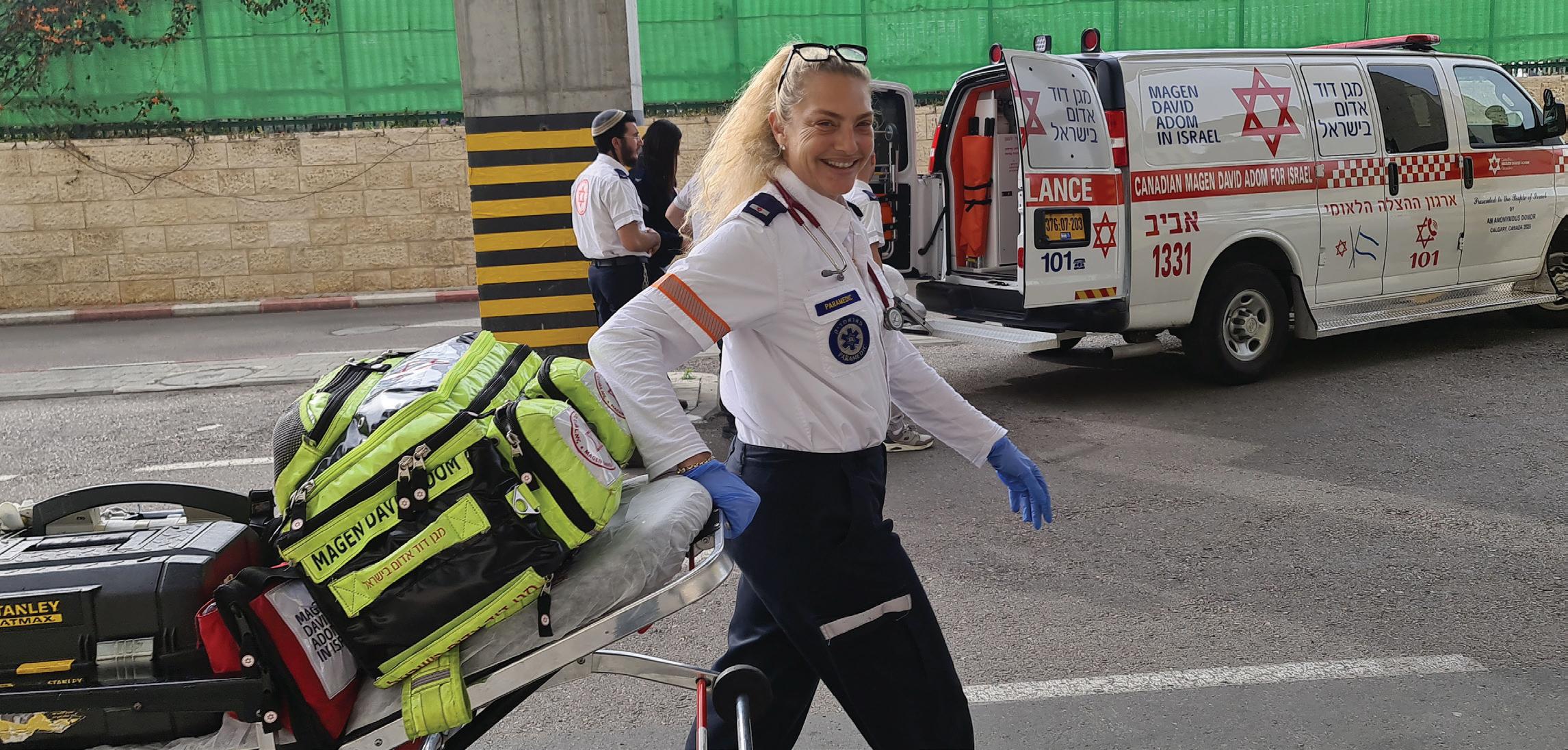
Paramedic Michaela Bercu
real pride and excitement that doesn’t diminish," Michaela says.
Today, familiar face or not, when Michaela gets into a mobile intensive care unit (MICU), she saves lives. "When I reach patients in uniform and with the medical equipment, they don’t always make the connection. Many times, they wonder to themselves if it's me or not. Sometimes, they ask me or one of the people on the team if it really is Michaela Bercu. When people realise
it's me, they are very supportive and their smile always stays in my mind," Michaela says. "Among the calls we receive to provide medical care, there is one that I remember in particular. We were called to an elderly person who was feeling unwell on the street. We took care of him, stayed to talk to him and, in the end, we danced with him and made him happy. So, making people feel good is also part of the treatment for me." Beyond her well-known personality
and life-saving volunteerism, Michaela is a humanitarian volunteer who founded the company Tribu, which focuses on encouraging volunteerism and community involvement.
"I think volunteering is the most selfish thing there is because the satisfaction you receive surpasses anything you give to others. It’s a wonderful feeling. It’s the ultimate healer of the soul and the greatest measure of happiness," Michaela says.


In the lead-up to Pesach, the story of our people’s exodus from Egypt wasn’t just read to The King David School students – it became experiential.
From the Early Learning Centre to Year 5, students explored the layers of our heritage in joyful, meaningful ways.
The youngest learners sang songs passed down through generations. Dressed in costumes, with props and pride, they guided their families through the rituals of the Seder, becoming active storytellers.
Across the Junior School, students crossed seas, dodged frogs and acted out the exodus in dramatic, movement-based fashion that brought the story to life. Kinder to Year 5 students prepared their own haggadot to be used at home.
To bring it all together, 10 joyful Sedarim were held, which brought together students and families in ritual, song and celebration.

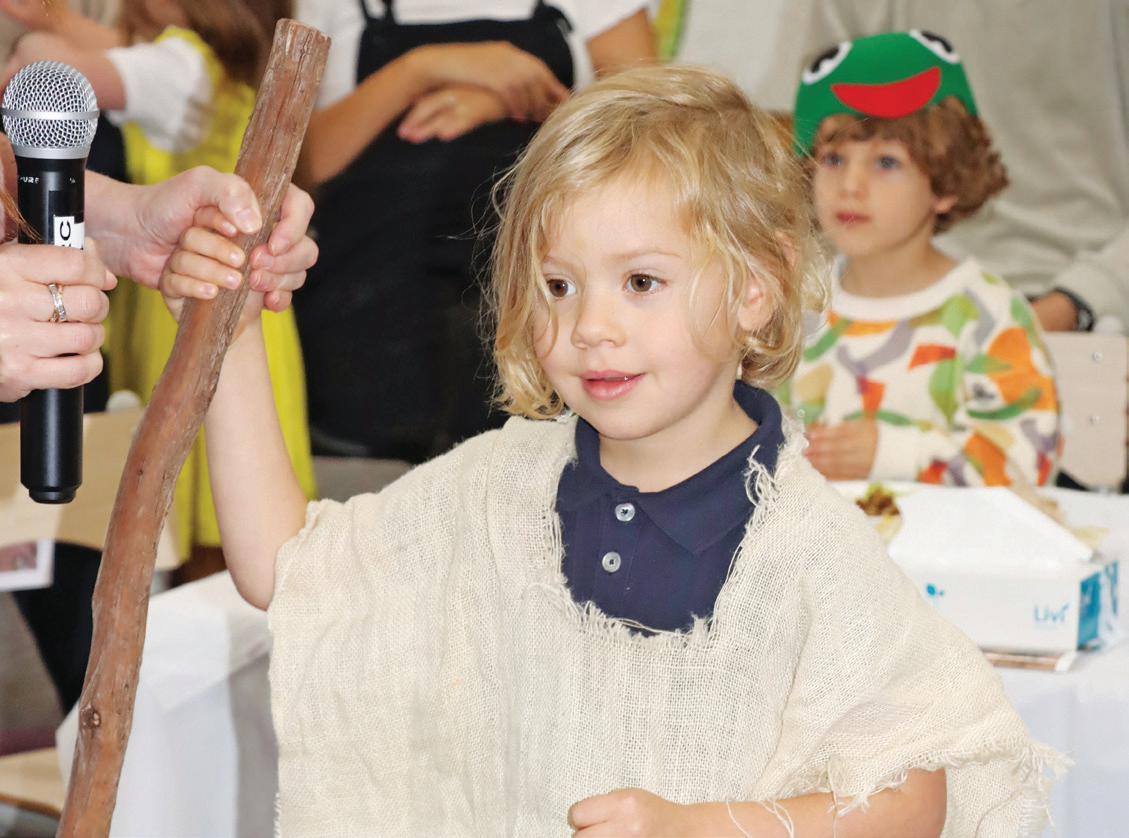

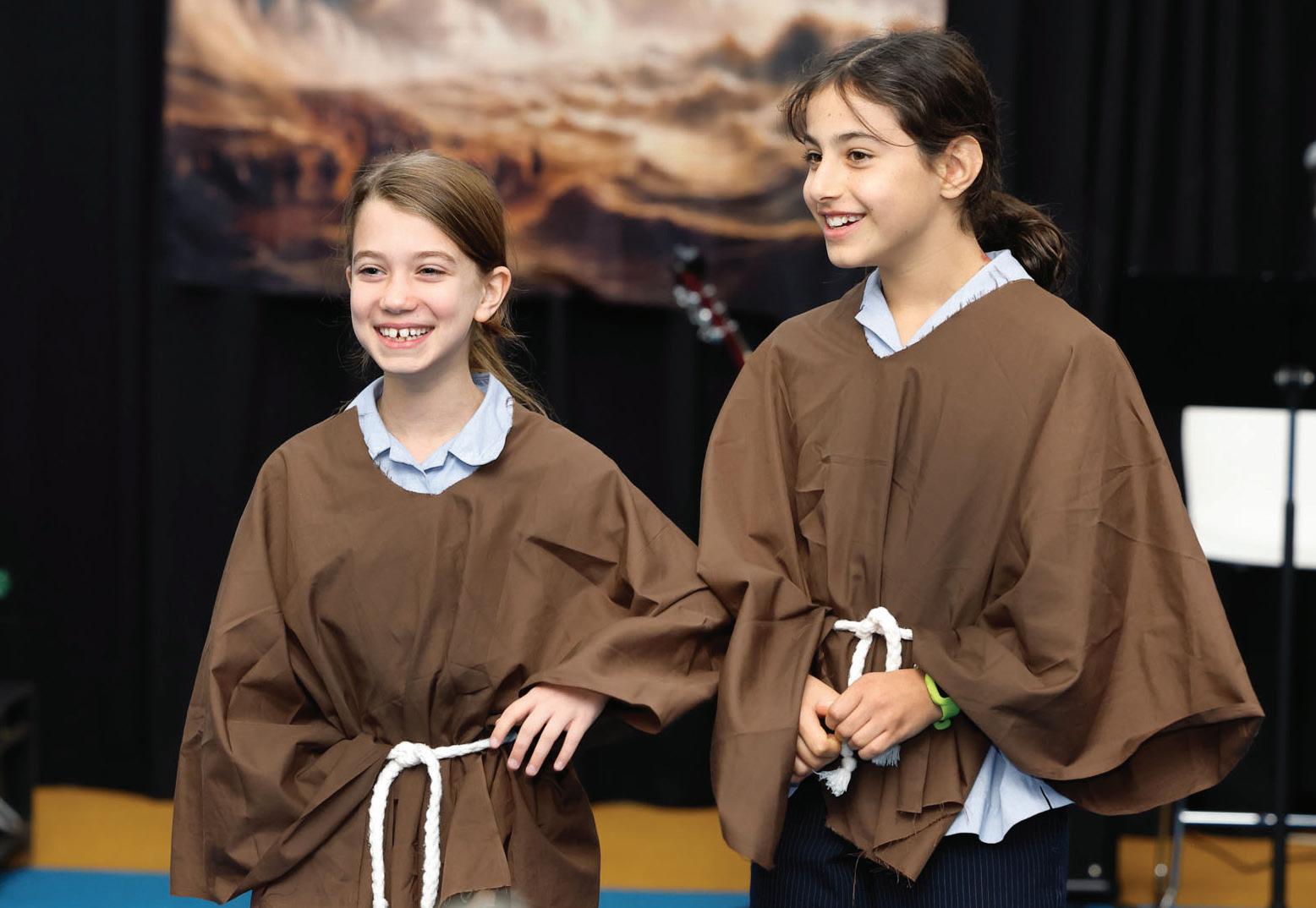
For more than a year, Israel was locked in a bitter struggle to survive, with unceasing rocket attacks, deepening anxiety and depression, and a declining economy. The war continues to impact Israel and its people. To heal, we need to look to the future – rebuilding both physical infrastructures and people's faith in their communities.
Over the next two years, JDC will deepen its work in the original four cities in which it worked at the outset of the war. It will also expand its program to include two additional frontline cities –Karmiel and Ma'alot-Tarshiha – in Israel's hard-hit north.
Reviving spirits in Ashkelon Ashkelon bears deep emotional scars in the wake of October 7, 2023. The economy has struggled, residents have suffered, tourism is negligible and morale is low. More than 18 months on and local residents are still living in pain. Recognising the need for local initiatives that provide a space to remember those lost, to heal and build for the future, JDC launched Reviving Spirits in Ashkelon in November 2023.
Reviving spirits in Nahariya Nahariya was the subject of frequent, often deadly rocket fire for much of

2024. The prolonged state of emergency upended city infrastructure and deeply shook morale. While the latest ceasefire brought some relief, essential services –welfare, special education and elderly care – still confront challenges.
JDC implemented Reviving Spirits in Nahariya in March 2024, however the ongoing rocket fire meant the initiative started slowly.
JDC and Nahariya used this time to learn from other Reviving Spirits' cities,
creating and finetuning activities that have blossomed in 2025.
Reviving spirits in Ofakim
Ofakim is reeling from the horrific events of October 7. JDC, in partnership with the local municipality, implemented Reviving Spirits in Ofakim in the early weeks of the war.
The initiative has now grown to in excess of 30 unique programs impacting children, young adults, seniors, reservist
soldiers and their families, as well as traumatised residents.
Reviving spirits in Rahat
Israel’s largest Bedouin city, Rahat, in southern Israel, is home to many that worked in the Gaza-border communities attacked on October 7. Eight people from Israel's close-knit Bedouin community were kidnapped and held captive in Gaza and 23 were murdered.
JDC partnered with Rahat's municipal and community leaders to craft Reviving Spirits programs that addressed the Bedouin community's needs.
In 2025, JDC has expanded Reviving Spirits to Karmiel and Ma'alot-Tarshiha, as part of its broader efforts to rebuild and reinvigorate Israel's north.
Built to house new immigrants to Israel in the 1960s, Karmiel is home to nearly 50,000 people. Before the war, JDC already operated there. The city is invested in promoting social change and is looking to Reviving Spirits to foster cohesion and resilience, and to promote healing.
Ma'alot-Tarshiha is one of Israel's few mixed Arab and Jewish cities. The community, struggling with preexisting poverty and heightened tensions, was further shaken by a deadly rocket attack early in the war, which caused significant damage to homes. This is why Reviving Spirits was sorely needed.
To find out more about the community rebuilding work of JDC (The Joint) Australia, go to https://thejoint.org.au
TRACY ESSERS COMMUNICATIONS MANAGER UIA
We all know that feeling. One of longing, hoping and missing our homeland. Since October 7, 2023, this feeling has only amplified as we yearn to be with our people during these difficult and treacherous times.
Perhaps you may not have been able to visit Israel over the past few months or, even, years. So, for those who will be heading to Israel soon, UIA wants to help make sure that while the People of Israel may not have seen you in a while, you get to see them in all the richness, diversity and beauty that the country has to offer.
If you’re in Israel between May and July this year, we’d love to have you join us on a UIA for a Day trip. UIA For a Day offers rare and rewarding opportunities – sights and sounds – that regular tourists to Israel aren’t able to experience. The new UIA for a Day excursions to the north of the country include an exploration of the Seam Line on Israel's northern border and a visit to the heavily impacted communities. There's also a world-famous Druze lunch to enjoy while learning about the Druze community and their connection to, and sacrifice for, the State of Israel. Led by qualified tour guides, these one-day excursions also give you the
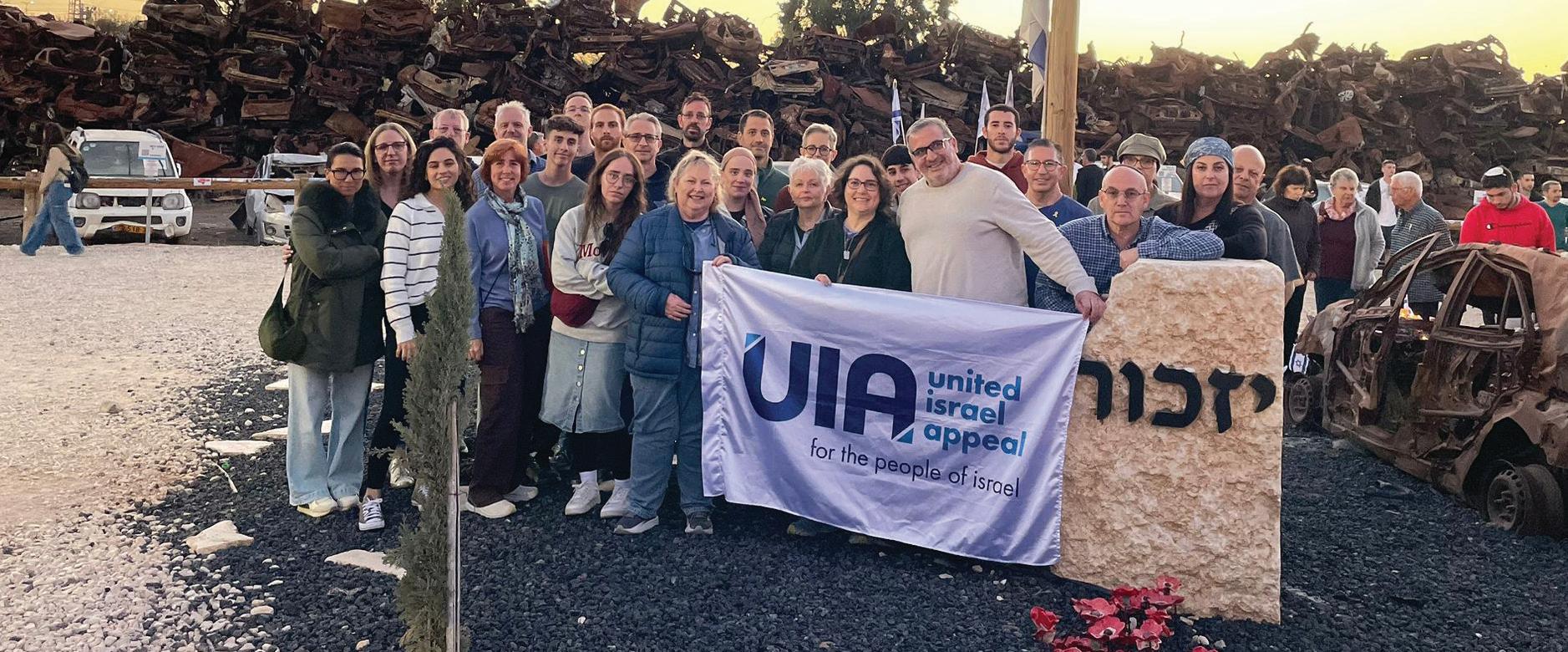
opportunity to see the various projects that UIA supports throughout Israel.
UIA for a Day visits to the south give participants the opportunity to pay tribute to those who perished on October 7. Areas seen may include Reim Junction, the Nova Dance Festival Site and Memorial, the car graveyard at Kibbutz Tekumah, Sderot and Netivot.
Don’t take our word for it – here’s what some of our recent UIA for A Day attendees had to say:
“Thank you so much to our tour guides Lyana and Ofri. This was an
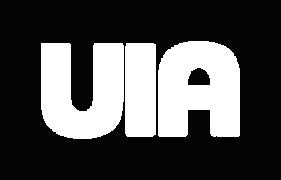
incredibly powerful and emotional day that reminded us of how strong the Jewish spirit is.” – Lexi Greenberg
“Thank you for such an important day. We felt so many emotions – from sadness, anger and grief, to hope and ultimately pride to be Jewish and for our people. Thank you for the opportunity to bear witness and for sharing your personal stories so bravely and eloquently. This day was so important on so many levels. Am Yisrael Chai.” –Stephen and Tanya Mendel
“Thank you to you both for making this an extremely meaningful day. I
have learnt so much.” – Yvonne Ramler
“It truly brought to life the famous verse, ‘we will dance again’ and helped us understand its depth in a way we never had before. We are so grateful for the experience and the effort you put into making it so special.”
– Tali Koth
Don't miss out on your opportunity to make the most of your visit to Israel while witnessing the impact of your support to UIA and the People of Israel. Book today. Go to https://uiaaustralia. org.au/uia-day
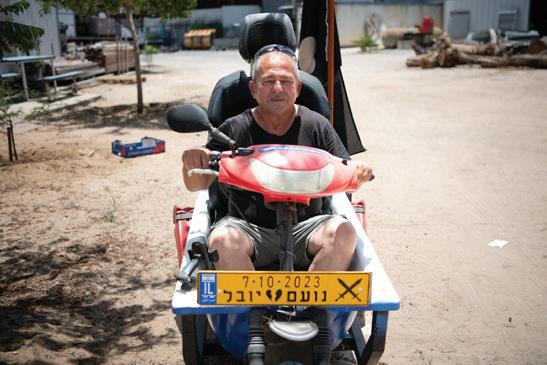

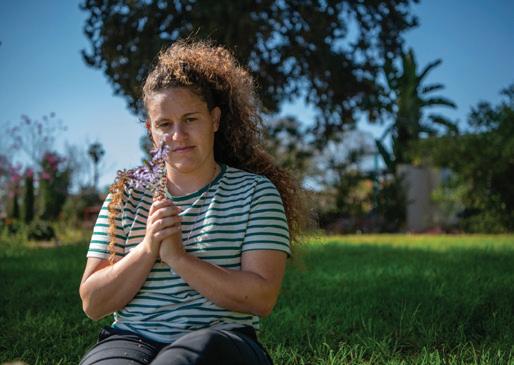
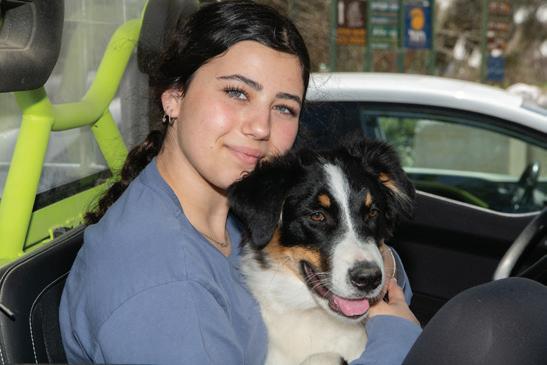

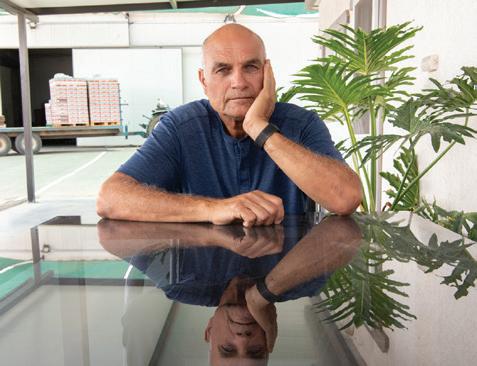

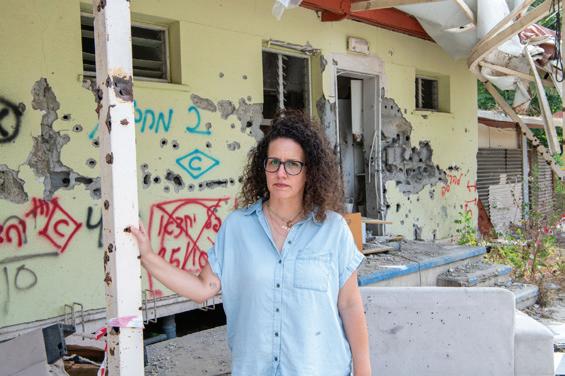
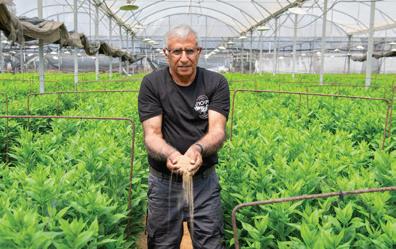
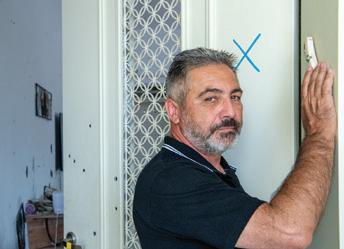

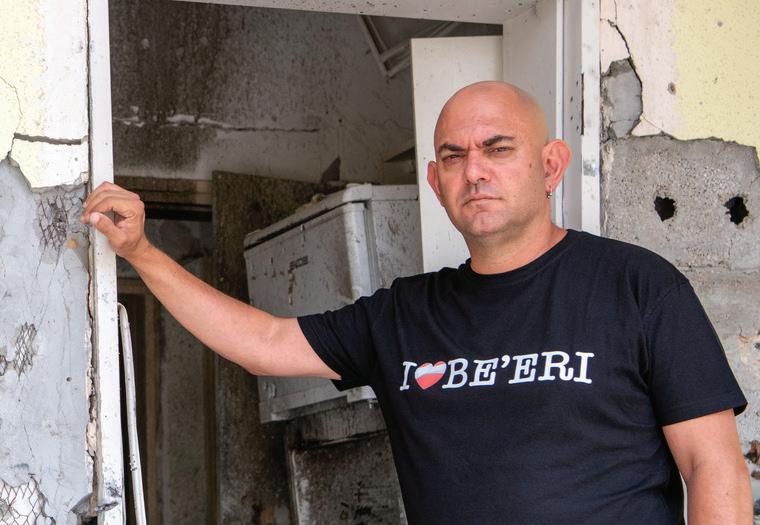

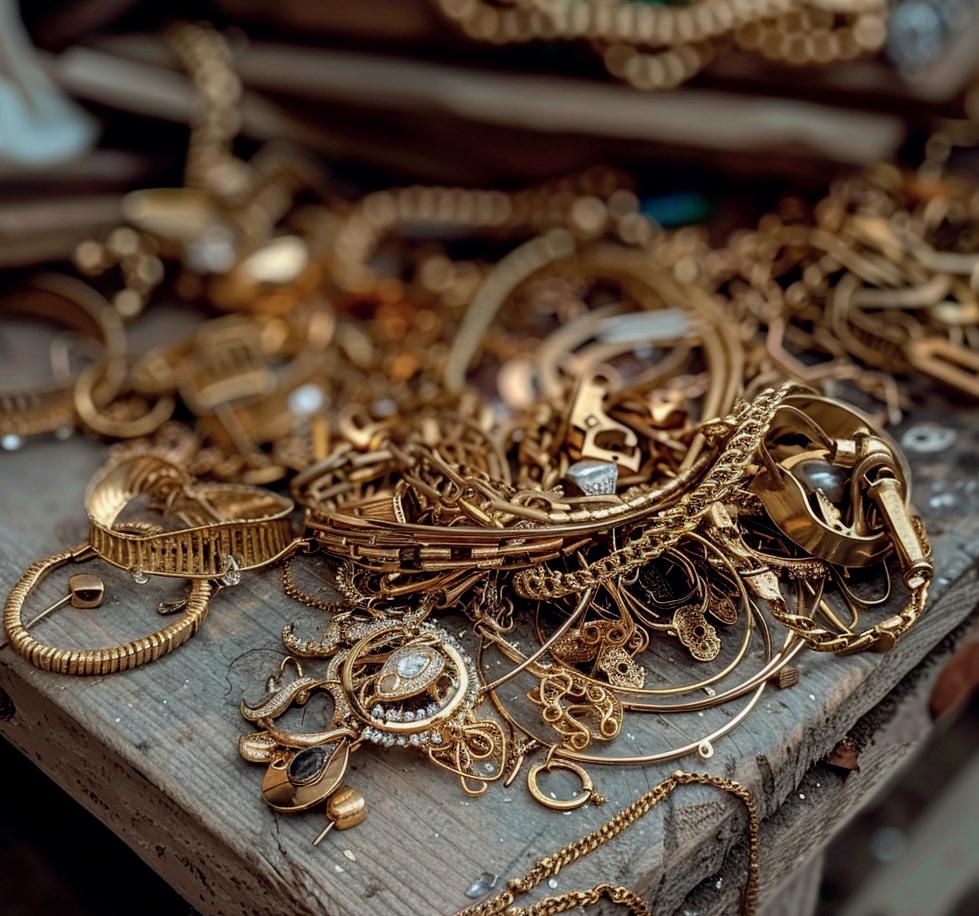

BY NOMI KALTMANN COURTESY: THE LEHRHAUS CONSIDERED OPINION
When MiLishkat HaDarom, a compilation of rabbinic questions and answers by Rabbi Yehoram Ulman, the senior Dayan of the Sydney Beth Din, was published about a year ago, it largely flew under the radar. Written in rabbinic Hebrew, the book’s dense style limited its reach among English-speaking audiences. Yet, behind its unassuming debut, lies the work of a global authority on Jewish family law, a rabbi and scholar whose expertise continues to shape the field in profound ways.
Rabbi Ulman fields some of the world’s most pressing questions related to fertility, IVF, Jewish divorce and the status of Kohanim. The book includes questions from many countries, including Australia, New Zealand, China, Japan, Singapore, Austria, and Israel, among others.
With endorsements from some of the greatest living rabbis, including Zalman Nechemia Goldberg, Shlomo Moshe Amar and David Lau, MiLishkat HaDarom is a groundbreaking work covering halachic questions that rarely get attention.
Born in Leningrad in the former USSR, Rabbi Ulman’s journey has taken him to yeshivot in Israel and the United States to his current home in Australia. A prominent figure in the Chabad Lubavitch movement, Ulman’s influence extends far beyond his affiliation.
Renowned as a trusted authority, he serves as the go-to halachic expert for thousands of Chabad shluhim worldwide, delivering rulings on complex cases across dozens of countries. A scholar of extraordinary calibre, Ulman is known for his innovative halachic solutions, stepping in where others might hesitate – such as navigating the intricacies of arranging a get for the exwife of the last Jew in Afghanistan who had been an agunah in Israel for many years.
Ulman’s book is divided into multiple sections, each with questions and answers on distinct topics such as Ishurei Yahadut, questions relating to Jewish Status, Mamzerut, which covers illegitimately conceived children, Kohanim, covering the priesthood, as well as sections dedicated to questions around fertility.
The questions, which can come from anywhere in the world, are always intricate and fascinating. Rabbi Ulman addresses the role of mitochondrial DNA in questions around Jewish status, as well as what a person should do if they lost their conversion certificate. Fertility questions are wide ranging, including artificial insemination from a husband to a wife, artificial insemination when the father is unknown, as well as questions related to the need for hashgahah (supervision) of fertility treatments like egg and sperm extraction. Unsurprisingly, Rabbi Ulman is in favour of rabbinic supervision of IVF, and in 1995, with Rabbi Yosef Feigelstock, pioneered the halachic protocol related to these treatments, which is used in
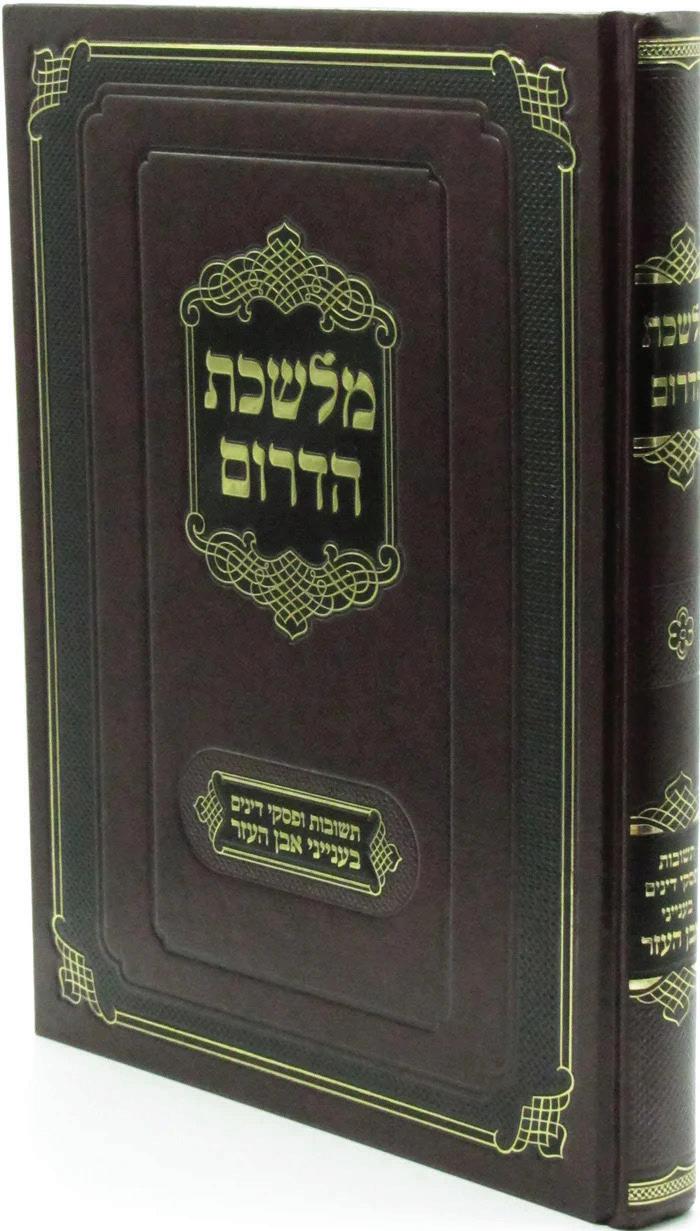
many countries. The complex questions that he receives are eye opening. For example, when the COVID-19 pandemic began, a Jewish couple in China faced an urgent dilemma. They had recently welcomed a baby boy, but with no local mohel available and China’s borders firmly shut, there was no foreseeable way to perform their son’s brit milah. Desperate for a solution, they wrote to Rabbi Ulman, asking if a woman in their community – an Orthodox Jew who kept Shabbat and kosher, and was also a trained surgeon – could perform the circumcision.
Rabbi Ulman carefully considered the unique circumstances, including the possibility that it might take over a year before a traditional mohel could reach the couple in China. Ultimately, however, he ruled that the brit milah must be conducted in accordance with Jewish law and tradition. While the female doctor was highly skilled in medical circumcision, her training followed secular, non-Jewish methods, which did not align with Jewish tradition. Therefore, he concluded, she could not perform the brit milah.
Another question Rabbi Ulman received revolved around a delicate family matter. A couple had divorced and the woman later married another man. However, her second husband suffered from severe erectile dysfunction and despite consulting multiple doctors, the couple was unable to consummate their marriage during their nine months together. The second marriage ultimately ended in divorce and the original couple reconciled, leading to a pressing halachic question: could the couple remarry?
According to Jewish law, a woman who has been both married to and intimate with another man after divorcing her first husband is generally prohibited from remarrying him. Rabbi Ulman approached the situation with deep sensitivity and rigorous halachic analysis. He determined that since the second marriage had not been consummated, the prohibition did not apply. Therefore, he ruled that the original couple could remarry, offering them a path forward within the framework of Halacha.
Some of the most intriguing and emotionally charged questions arise in
the sections addressing Jewish status. These enquiries reveal the complicated, often painful realities of life, such as a father declaring his son a mamzer, based on the mother’s admission of infidelity, the status of children born to parents married in a Conservative wedding ceremony, or a woman who has been intimate with other men engaged to a Kohen. Among these questions and answers are also deeply tragic cases, like that of a survivor of childhood rape who still wishes to marry a Kohen.
While Orthodox halachic law is sometimes criticised for its perceived rigidity, reading a modern work like MiLishkat HaDarom by Rabbi Ulman offers a refreshing perspective. It demonstrates how remarkably adaptable Halacha can be when a skilled and thoughtful authority examines a complex question, carefully weighing all the facts, before arriving at a decision.
As I delved into the many questions and answers written in rabbinic Hebrew, I found myself wishing these fascinating cases could reach a broader audience in English. While I could navigate and understand the Hebrew, I know that many people lack the same textual grounding. Although I haven’t asked Rabbi Ulman if he plans to translate his book, several rabbis I consulted explained that many poskim deliberately choose not to translate their works into English.
This decision often stems from a desire to prevent their rulings from being misapplied and to ensure that only those capable of engaging with the material in Hebrew can interpret and apply their answers correctly.
In addition, as I read through some of the questions in MiLishkat HaDarom, a concerning thought began to surface: the details in the book seemed strikingly specific. It might not be as challenging as one would hope to identify the businessman in Shanghai who discovered late in life that he was a Kohen, yet sought to marry a Russian woman he had been involved with, whose parents had converted – and who turned to Rabbi Ulman for guidance.
Similarly, within the tight knit global Jewish community, it might not be too difficult to pinpoint the civilly married couple in Austria whose rabbi wrote to Rabbi Ulman seeking advice on whether the wife could begin using the mikveh in Vienna before they had a Jewish marriage ceremony.
While these rulings are fascinating, their personal nature left me questioning whether such specific details should have been shared so openly.
Overall, MiLishkat HaDarom showcases the brilliance of a rabbi of Rabbi Ulman’s calibre, navigating the complexities of contemporary Jewish life with profound sensitivity and insight. His ability to address the difficult questions facing the Jewish people today, while balancing tradition with modern realities, shows the enduring relevance and adaptability of halachic thought.
Realising the dream of Zvi Herman Schapira and other Zionist leaders at the first World Zionist Congress in 1897 that there should be a Hebrew University in Jerusalem, on the 1st of April 1925, in a ceremony attended by dignitaries from across the region and around the world, the Hebrew University of Jerusalem officially opened its academic doors.
After decades of thought and more than seven years of construction –from the setting of the cornerstones in 1918 to the start of classes in 1925 – the university’s official opening marked the start of a new era, setting the stage for the institution to become a beacon of academic excellence and an internationally-renowned incubator of discovery and innovation.
On a simple wooden stage, without a microphone or amplification, speeches were delivered by Dr Chaim Weizmann, one of its founders who would later become Israel's first president, Chief

academic delegations from the United Kingdom, Ireland the United States, the Netherlands, Egypt, Switzerland, France, Canada, Poland and Austria. Notable attendees included Meir Dizengoff,
of his vision. This manuscript has been preserved ever since in the Einstein Archives, located at the Edmond J. Safra Campus in Givat Ram. In a 1921 interview with The New York Times,
and social discourse. These are among countless areas where the university has left its mark.
The CEO of Australian Friends of the Hebrew University, Rob Schneider, said: “We are extremely proud to celebrate this remarkable milestone. As we celebrate the centenary of the Hebrew University of Jerusalem, we take immense pride in its extraordinary legacy of innovation, academic excellence and global impact. For 100 years, the university has pushed the boundaries of science, medicine, technology and the humanities. Its groundbreaking research and brilliant minds continue to shape the future, making a profound difference in Israel and around the world. We, at the Australian Friends of the Hebrew University, are honoured to support this remarkable institution and look forward to the next century of achievement. In coming months, we will be sharing details of how we will mark this momentous milestone here in Australia.”
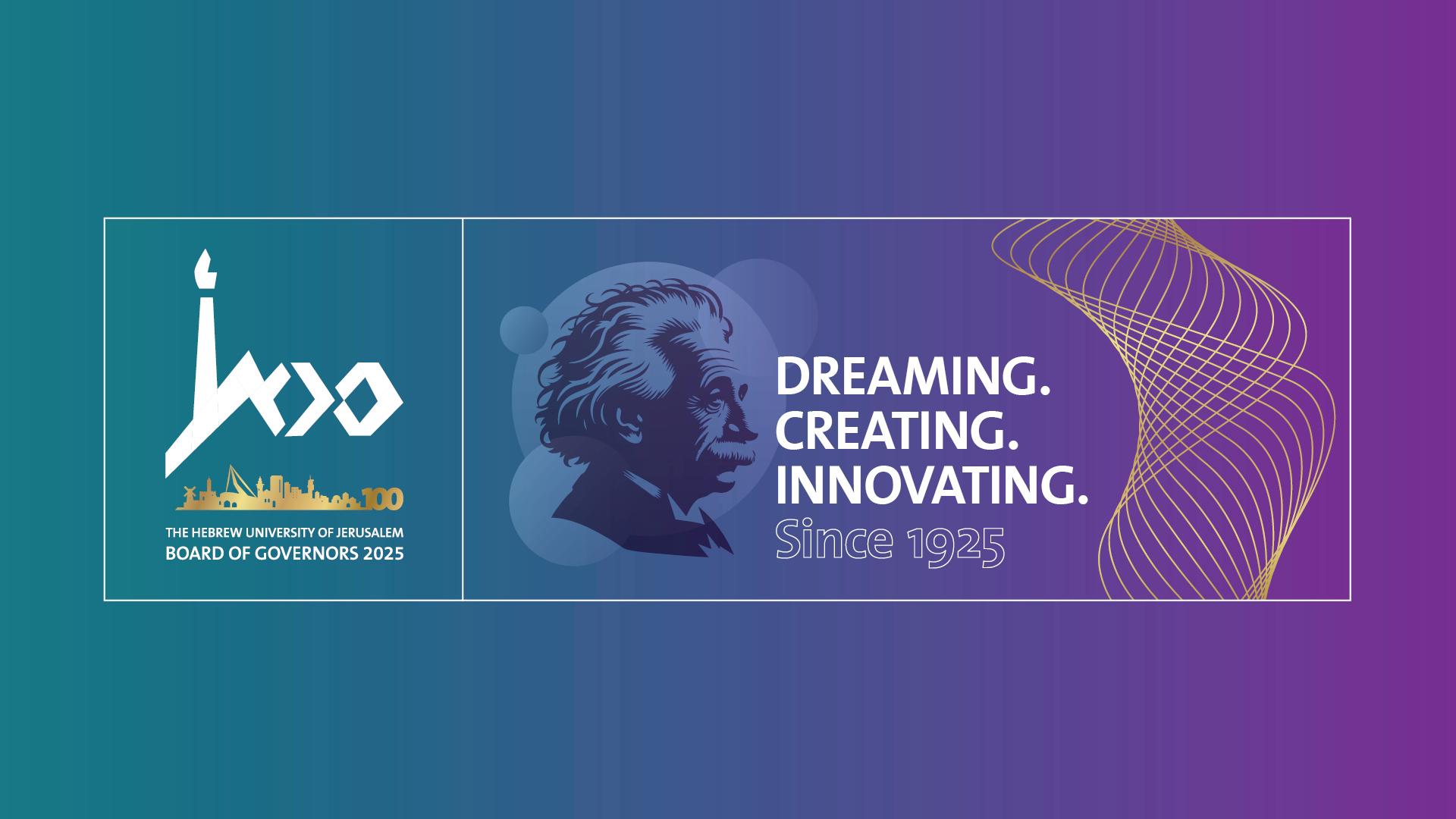

As it enters its second century, the




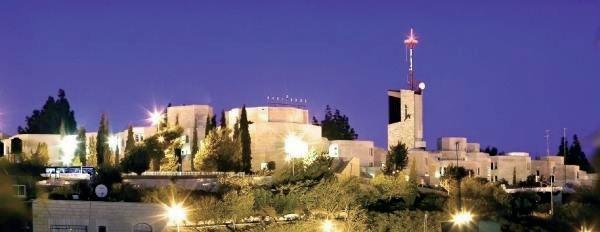


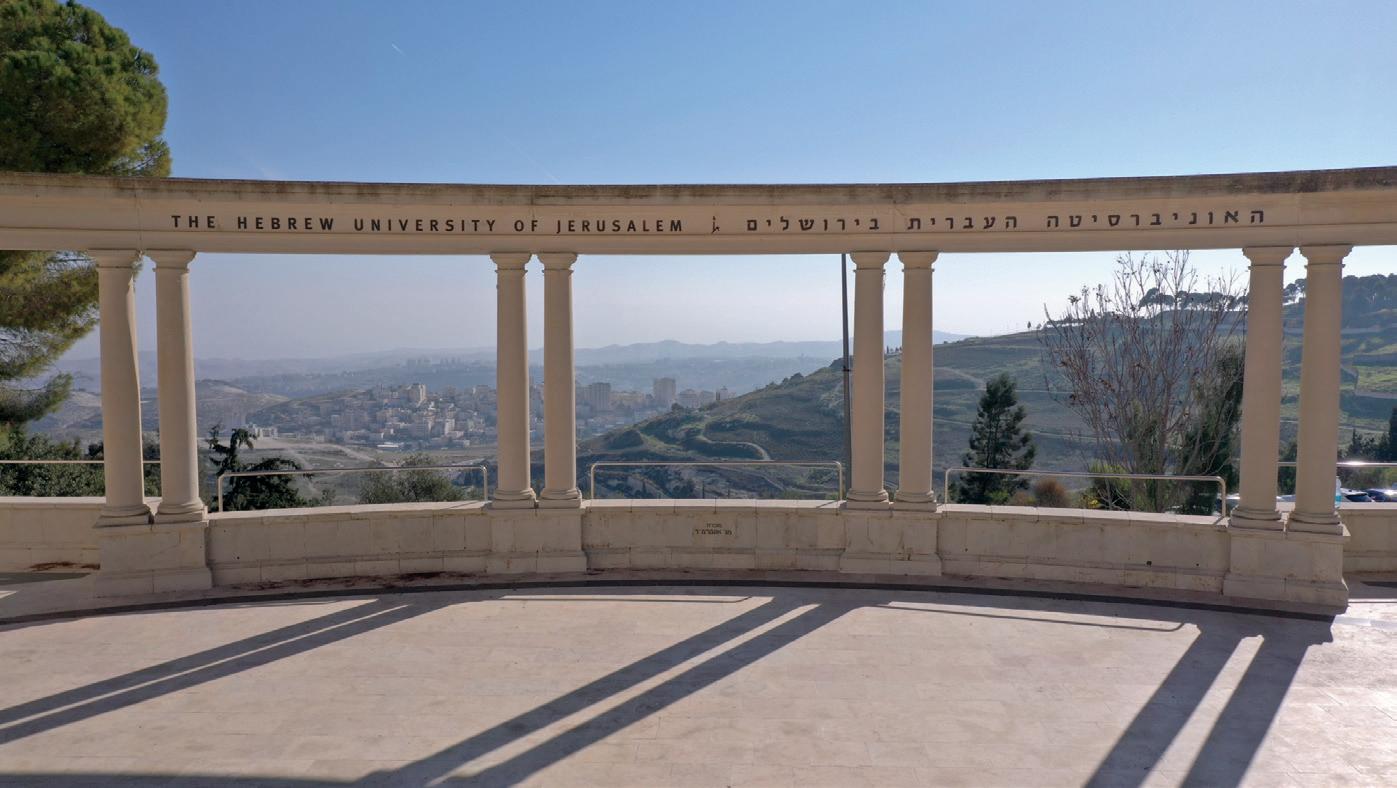




DAVID SOLOMON, CEO AUSTRALIAN FRIENDS OF TEL AVIV UNIVERSITY
Artificial Intelligence (AI) outperforms physicians in virtual clinic study
A groundbreaking study led by Professor Dan Zeltzer from Tel Aviv University's Berglas School of Economics has revealed that, in certain cases, AI technology may already provide more accurate diagnoses and treatment recommendations than human physicians.
The study
Conducted at Cedars-Sinai Connect, a virtual care clinic in Los Angeles, the research compared the performance of AI with that of physicians in diagnosing and treating adult patients presenting common symptoms like respiratory issues, urinary problems, eye conditions, female anatomy concerns and dental ailments.
Cedars-Sinai Connect operates a virtual clinic with physicians who specialise in family and emergency care. In 2024 they integrated an AI algorithm, developed by Israeli startup K Health, into telemedical consultations. The AI algorithm is based on machine learning that conducts initial patient intake through

a dedicated chat. It also incorporates data from the patient’s medical record, before providing the attending physician with detailed diagnostic and treatment suggestions at the start of the visit.
Recommendations can include prescriptions, tests and referrals. After interacting with the algorithm, patients proceed to a video visit with a physician, who ultimately determines the diagnosis and treatment.
To ensure reliable AI recommendations, the algorithm –which is trained on medical records from millions of cases – only offers suggestions when its confidence level is high. In this sample, no recommendations were made in about 20 per cent of cases. The study compared the quality of the AI system's recommendations with the physicians’ decisions in the clinic.
Afterwards, all recommendations, from both the algorithm and the physicians, were evaluated by a panel of four doctors with at least ten years clinical experience. The panel rated each recommendation on a four-point scale: optimal, reasonable, inadequate or potentially harmful. The evaluators assessed the recommendations based on the patients' medical histories and the information collected during the visit, as well as transcripts of the video consultations.
Conclusions
The review revealed that AI recommendations were deemed optimal in 77 per cent of cases, compared to 67 per cent for physicians. Moreover, AI's suggestions were rated as potentially harmful in only 2.8 per cent of cases, compared to 4.6 per

Countless TAU students have lost loved ones or endured unimaginable trauma, and many now suffer from PTSD. To address this crisis TAU established Israel’s most advanced post-trauma clinic, providing cutting-edge, evidence-based treatments developed by our globally-renowned researchers over the last 30 years. The clinic has become a critical resource for Israel, treating many TAU students struggling to rebuild their futures.
cent for physicians. According to Professor Zeltzer, the advantages of AI lie in its strict adherence to medical guidelines, such as avoiding unnecessary antibiotic prescriptions for viral infections, and its ability to identify subtle medical details from extensive patient records. However, human physicians excel in assessing the nuanced aspects of a patient's condition that may not be captured by AI, such as interpreting symptoms in real-time and considering broader health contexts. "This study highlights AI's potential to enhance medical decision-making, particularly in routine cases," Professor Zeltzer said. "While AI demonstrates impressive accuracy, it complements rather than replaces human expertise. Future integration of AI in medical practice should aim for synergistic collaboration between technology and clinical judgment."
Published in the Annals of Internal Medicine and presented at the American College of Physicians’ conference, the study underscores Tel Aviv University's leadership in digital health innovation. As AI continues to evolve, ongoing research will explore optimal ways to integrate these technologies into healthcare settings, ensuring safer, more efficient patient care.

YOASH DVIR CEO TECHNION AUSTRALIA AROUND
I am writing this column in Israel, just before Shabbat, on the eve of Passover. My heart is with the Seder, but my mind is already thinking ahead to Yom Ha’atzmaut.
It’s impossible for me not to connect the two. Fifty-nine hostages are still being held in Gaza, 24 of whom are believed to still be alive. Please, God, release them all. The proximity of Passover (the festival of freedom) to Yom Ha’atzmaut (Israel’s independence day) sharpens the meaning of both. What does it truly mean to be free? What does it mean to have our own country – a Jewish country – especially in a year like this?
Yesterday, as I drove through the streets of Israel, I saw something simple, yet profound: people cleaning. Not just a few families, but an entire country in the same state of mind. Scrubbing, vacuuming, airing out – preparing for the Seder. There was something beautiful and moving in it. Everyone, regardless of background or observance, doing the same thing at the same time, for the same reason. A people connected not just by religion, but by rhythm. That is the true meaning of a Jewish state.
When you live outside of Israel – in New York, Melbourne or Sydney – you can feel the Jewish holidays around
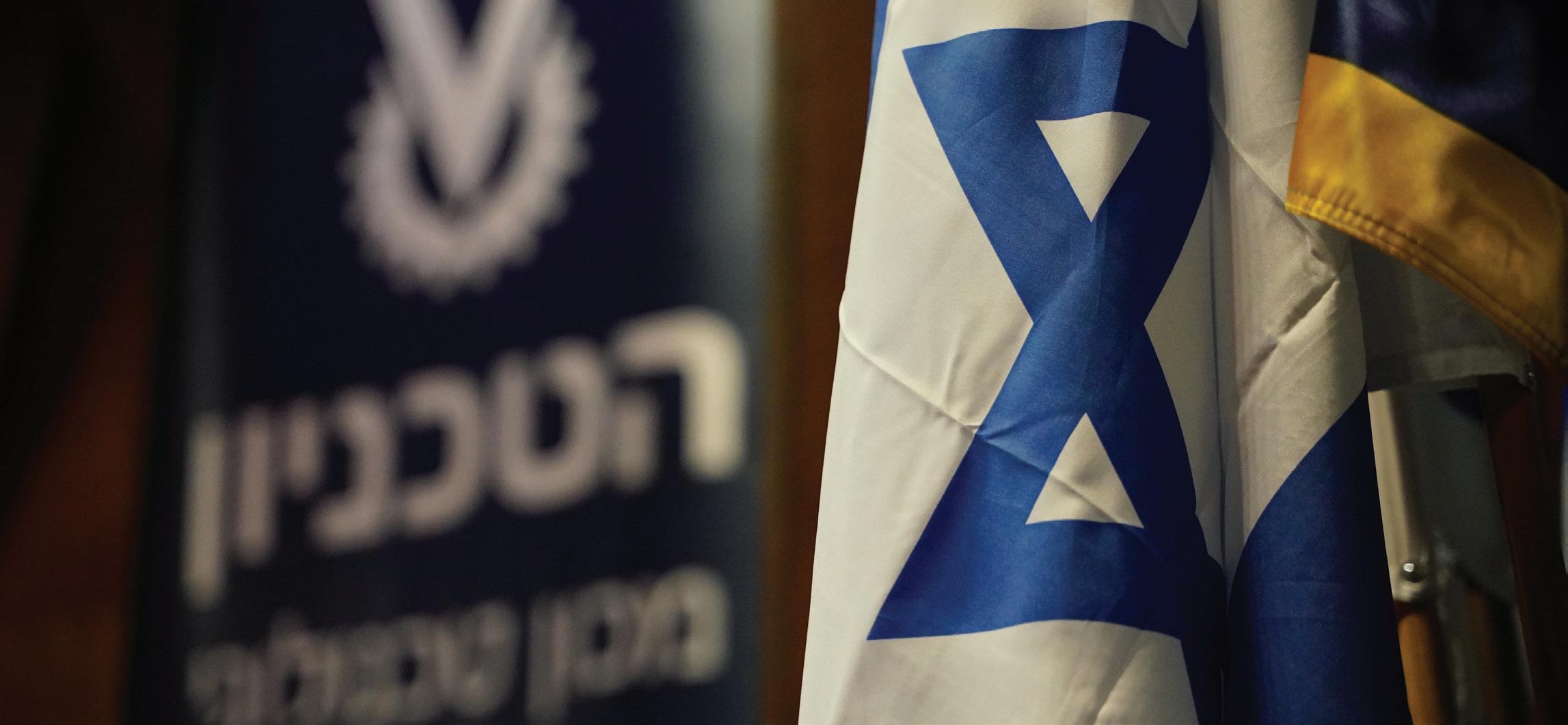
you, especially if you’re lucky enough to live in a strong community. But it’s not the same. In Israel, the holidays don’t feel like something you are observing. They’re something we are living. Here, the radio ads make cheeky jokes about chametz and freedom, instead of Santa and sales. The supermarkets, the streets, the schedule – everything echoes the calendar of our people. The spirit of the holiday isn’t something you have to create – it’s in the air.
And nowhere is that more evident than at the Technion, though you might
not realise it at first glance. What you see is a university: a hub of science and engineering. But what’s really happening is a quiet expression of national freedom: the ability to think, to invent, to imagine a better future for ourselves and for the world. Every researcher developing a medical breakthrough, every student learning to code or build or heal is part of something bigger. They’re not just contributing to Israel’s success. They’re fulfilling the promise of it.
That promise isn’t only about land or safety. It’s about dignity. Opportunity.
Self-determination. It’s about ensuring that “to be a free people in our land” isn’t just something we sing, but something we live – in our cities, in our homes and “yes”, even in our labs and classrooms. With Yom Ha’atzmaut around the corner, we find ourselves between reflection and celebration. We’ve told the story of our exodus again and now we get to look around – at our people, our country, at all that we’ve built – and remember that this, too, is part of the story. This, too, is freedom.

ALIYAH ADVENTURES CONSIDERED OPINION
RAMONA FREEDMAN
Perhaps because so much of the news here is serious and sensitive, Israelis feel like the vast majority of trips they take have a hastiness about them. Is it police, fire, ambulance or just some dude who feels he is above the law, racing around, ignoring speed limits and the rest. It catches everyone’s attention, but nobody really knows.
I have now been in Israel for nine months and am experiencing each festival here for the first time. Recently, we celebrated Pesach, also known as Chag HaAviv, and it is just that – a festival actually in Spring, as opposed to our autumnal weather, south of the equator. Honestly everyone had a spring in their step in sync with the season.
Trolleys were full to the brim in supermarkets, men were illegally crossing streets, carting around extra white chairs recently bought for their long Seder tables. There were endless discussions about products containing kitniyot, which are certain grains and seeds permitted over Pesach by Sephardim and not Ashekenazim (who are always lamenting this annoying reality).
Well, I married Mr Ashkenazi, so I could only look at the enormous array of options the Sephardim had over that festival from a long distance. Of course, this abundance of all-things-kitniyot makes perfect sense, as the vast majority here are of Sephardi lineage – the sun is also their friend, not their foe as my fair Polish skin keeps reminding me on a daily basis.
I have met lovely friends at my ulpan and recently we all gathered to eat and fress in a local kosher café – it is very cool that the restaurants and cafes along Ra’anana’s ‘High’ street, Achuza, are all kosher. It was a late lunch and only
a couple of tables were filled, ours and one with Israelis chatting away.
We are rarely ‘ladies who lunch’, so we were excited to catch up and were laughing hearing spirited stories about crazed colleagues; we also marvelled at the way that sometimes the system here is profoundly disorganised and yet … it all keeps working out in the end.
My ex-Johannesburg friend, Liza, reached the humourous heart of her tale as a teacher, when suddenly, we were interrupted by irate Israelis on the (only) other table. They were gesticulating, they were annoyed and they were hellbent on one thing: silencing us.
We gave each other that look girlfriends give when they are reprimanded: knitted brows, wide eyes and all. In the next breath, the Israeli posse proceeded to escalate their voices significantly and we literally couldn’t hear each other.
Pray tell Israeli table, where was the decorum you so piously preached not a minute earlier? Nowhere to be found. Cue another eye roll from us ‘Anglos’. I laughed but our dear tired teacher grimaced.
Speaking of great divides, I have noticed something at Shabbat tables. Our Day of Rest is our time to schmooze here in a relaxed environment (and pray of course). For a person to truly relax, the fressing on fabulous food is a given; I never realised how speaking one’s Mother Tongue is an essential component of that too.
For many new Olim (new immigrants to Israel), the children are sent to local schools and “yes”, they are in time immersed in the Hebrew language. Look around and you have all these effortlessly bilingual and trilingual children in this country.
Given our age and stage, parents might be learning Hebrew at their local ulpan class, but when we relax, we speak English; just like my late grandfather would converse with my
father in his native tongue, Yiddish. While I am struggling to memorise the verb ‘to participate’, which perennially slips from my mind, these kids are effortlessly flicking between languages during the same meal. They don’t realise how amazing they are, which is probably for the best.
Two entrepreneurial ex-South African 15-year-olds offered a car cleaning service before Pesach. I want to support local youth (and also desperately needed my car cleaned) and couldn’t help but notice these boys spoke Hebrew to each other. A new generation of savvy sabras, or a hybrid thereof, emerges.
When I was in primary school, many, many moons ago, I distinctly recall that our entire class (but one) was made up of first generation Australians. I remember beautiful birthday cards from my grandmother, who spoke Dutch and other languages, but hadn’t been educated in English; she wrote sweet sentences, often with grammatical mistakes woven through.
I realised that I am now that immigrant – perhaps not a grandmother writing cards (yet) but still, I am now the one who went from having a sky-high level of my local language to sitting like a schoolgirl in a classroom, except this time around my memory is … not my friend. I no longer possess the elasticity of a young mind. Therefore, it is even more important I attend ulpan if I want even half a chance of absorbing any Hebrew. There is one huge difference between my experience and the immigrant story of so many waves of Australians and others. Israel is delighted to have me. Thrilled to bits. They offer free classes to learn our language. They give you a few shekels, in case you are not working. They even give you some free pots and pans before Pesach because a philanthropist wanted you to have them. This all amounts to “let me help you; thanks for ‘coming home’”.
In stark contrast, certainly from the 1950s on, waves of immigration to Australia was metaphorically akin to dipping into a crucible of derision and distrust, before ultimately, as always, time and tenacity worked their magic. Even though absorbing Jewish people into Israel’s infrastructure is not easy, the country has welcomed us with open arms. In Ra’anana, where people come from Australia, South Africa, France and the USA (to name but a few) in numbers, you hear English and French on the streets as much as Hebrew.
I also know how blessed I am to have our shul community, Kehillat Lev Ra’anana (KLR), here. After all, young or not-so-young, it is all very well to have a Shabbat table, but it doesn’t come alive if there aren’t people to sit around it. To me, this is where the raison d’etre of KLR shines in a delightfully Diasporaesque way. The shul is an anchor for us and all the stories that happen along the way are shared, along with festivals and incredible ruach (or spirit) each Friday night and more.
Maybe I don’t have a tree diagram of the Israeli army hierarchy in my head; maybe I don’t have an innate understanding of so many abbreviations in the modern Hebrew language (I recently learned ‘sofash’, which is short for ‘sof hashavua’, the weekend); maybe I don’t quite get the obsession with printed and personalised T-shirts for milestone moments. Maybe I don’t have a rotating flashing light on the roof of my car just … because. Maybe even more … but I know that if I fall people won’t merely register it, they will run to help me and they would run to help you. They will continue to campaign tirelessly for each and every hostage. We all will. One people. One heart.
Until next time, it is over and out from Ramona in Ra’anana.
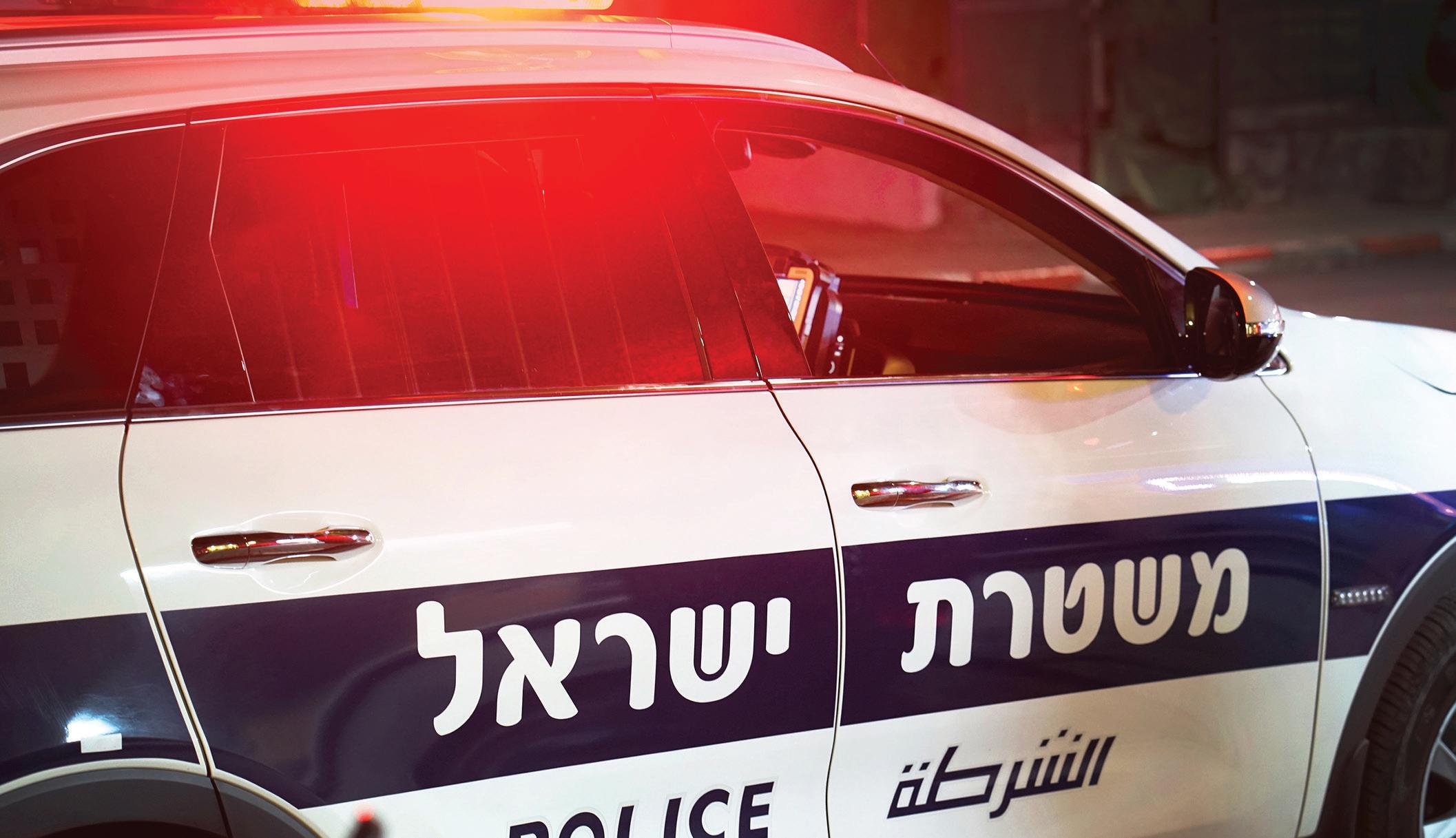
At a recent Melbourne event, I stood alongside former Israeli Ambassador to the UK Mark Regev, one of Israel’s great voices to the world. As we spoke about today’s complex realities, I was struck by something both deeply personal and powerfully national: Israel matters. Not just globally, but intimately, to us here in Australia.
This Yom Ha’atzmaut, we celebrate 77 years of modern statehood. A miracle? Undoubtedly. But not a new miracle. Israel is not a novelty in Jewish life, it is its heart. As our sages teach us that it is the land promised to our ancestors, the stage for our prophets, the direction of our prayers. It’s not just about geography, it’s about destiny.
So why does Israel matter here, to a Jewish child in Caulfield or Dover Heights? Why should it matter to a young adult who has never been, or to a busy parent navigating the joys and pressures of life in suburban Australia?
Because Israel is not only about borders and battles. It is about belonging. It is about purpose. The Torah was given in the wilderness, but it was meant to be lived in the Land.
As the Ramban teaches, many mitzvot only truly come to life in Israel. The land doesn’t just support Jewish life – it enables the highest form of Jewish life. The air of Israel, says our tradition, makes one wise. It’s where prophecy thrived,
where Divine Presence is more easily felt and where we are meant to be a light to the nations. In Australia, we build beautiful communities, vibrant schools and meaningful Jewish experiences. But it is our connection to Israel that anchors us to something bigger … to a shared mission that transcends time and space. That’s why when we send students to learn in Israel, when we support its people, or even when we simply talk about it around our Shabbat tables, we’re not being political, we’re being Jewish. And especially now after the horrors of October 7, 2023, the rise in antisemitism and the moral confusion of so much of the world, we need Israel. Not just as a refuge, but as a reminder that we are a people with roots, that our history matters and that our future is not shaped by fear, but by emunah (faith).
Mark Regev reminded us that the world often holds Israel to a higher standard. That’s not a burden. It is a reflection of our mission. Israel, as our sages write, was always meant to be a model society, a place where Torah meets real life. It won’t always get it right, but it is ours. And when we stand with it, we don’t only stand with a state, we stand with our story, our values and our hope.
This Yom Ha’atzmaut. Let’s not just wave flags or sing Hatikvah. Let’s teach our children that Israel is more than a country. It is an inheritance, a purpose and a piece of us. Because from Melbourne to Jerusalem, Am Yisrael Chai and the land at the centre of it all continues to give our story life.
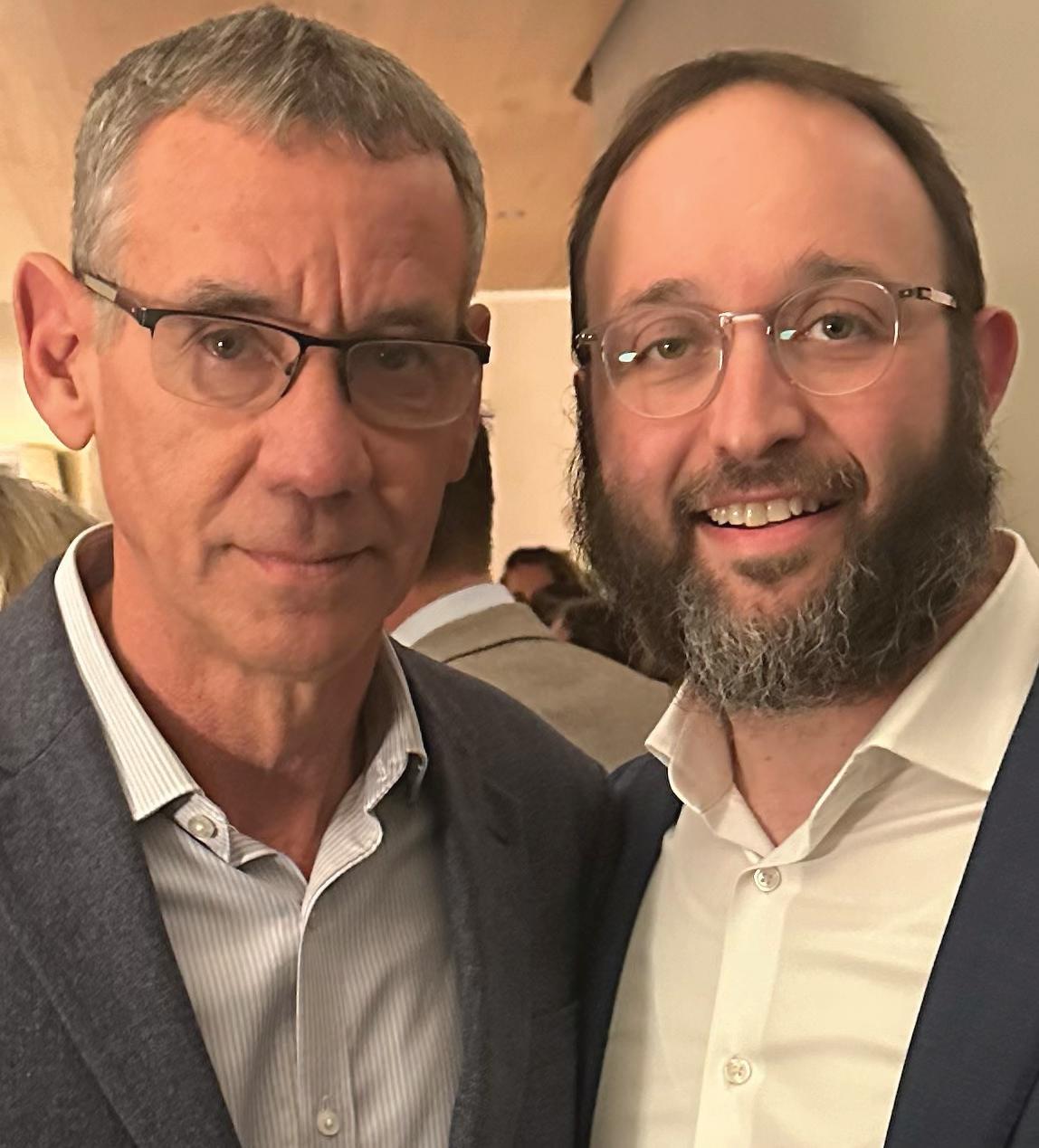
ones to return, especially those still held hostage in Gaza. Their pain will be our pain. Their hope will be our hope.
This month will be deeply stirring for the Jewish community – here in Australia, in Israel and around the world.
As we prepare to observe Yom Hazikaron, we will pause to honour the memory of Israel’s fallen soldiers and victims of terror. This day is never easy and this year the sorrow will feel especially heavy. The names of more than 1,000 individuals lost since last Yom Hazikaron will fill the front page of Yediot Aharonot – a stark reminder of the price so many continue to pay for our collective security and freedom.
In a nation as interconnected as Israel, every loss ripples through communities and across continents. The grief is not abstract, it is deeply personal. It will touch every one of us.
The transition from Yom Hazikaron to Yom Ha’Atzmaut remains one of the most emotionally complex moments in Jewish life. It asks us to hold mourning and joy together – to celebrate the miracle of Israel’s existence while remembering those who made it possible.
This year, as we mark Israel’s 77th birthday, our joy will be real, but not without reflection.
We will celebrate Israel’s achievements, resilience and spirit, but we will do so with heavy hearts, thinking of the families still waiting for their loved
Even amidst music, dancing and community gatherings, many will feel the quiet ache of those not present – soldiers who will not come home, victims of terror, and the missing whose fate remains uncertain. And yet, this emotional complexity is at the heart of who we are as a people.
Judaism makes space for all of it. We are a people who have always known how to carry sorrow and celebration side by side. We will say Kaddish and we will sing Hallel. We will remember and we will rejoice.
In these moments, we will be reminded of the strength of the Jewish spirit, the resilience of our community and the power of unity. Across backgrounds, affiliations and generations, we will come together, not just to commemorate or celebrate, but to reaffirm our shared identity and purpose.
Let this Yom Ha’Atzmaut be a time to reflect, to reconnect and to recommit ourselves to the values that bind us: community, compassion, courage and hope. May the memory of the fallen be a blessing. May the hostages be returned safely and soon.
And may we, as Am Yisrael, continue to stand together – strong, proud and united.
Chag Atzmaut Sameach. Am Yisrael Chai.
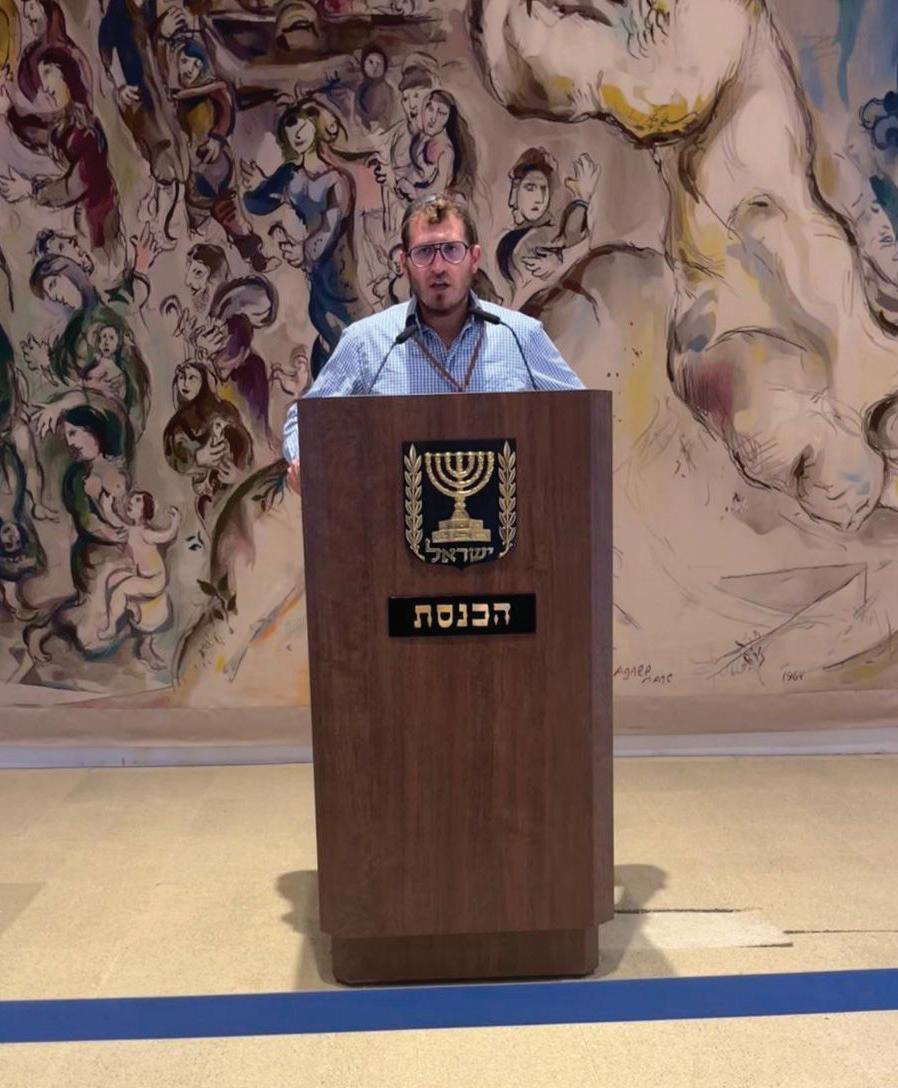
RABBI DR BENJI LEVY RABBINIC THOUGHT
There’s a growing dissonance between the Jewish story and the way we often tell it. We are a people whose impact far outweighs our numbers, whose creativity and resilience have shaped the world across generations. And yet, too often, our communal narrative centres on crisis – on persecution, antisemitism and survival. As we celebrate 77 years since the rebirth of the State of Israel, it’s time to shift our lens from merely reacting to threats to proudly embracing the miracle, purpose and promise that Israel represents.
Israel is not just a safe haven born from tragedy – it’s the bold realisation of a 2,000-year-old dream. Against all odds, Israel has become a global leader in technology, medicine, agriculture, defence and humanitarian aid. From water innovation that’s helping feed entire continents, to cutting-edge treatments saving lives around the world, Israel is living proof that Jewish sovereignty is not just about survival, but about contribution.
And yet, especially in the wake of October 7th, 2023, with antisemitism surging in countries once considered safe havens, many Jewish communities are retreating back into a defensive stance.

The protective instinct is understandable. For many, especially Holocaust survivors and their descendants, the pain of past trauma runs deep. In places like Sydney, where I grew up, Holocaust memory has long been a central pillar of Jewish identity. According to the Gen17 survey, a massive 95 per cent of Australian Jews
Recently, I attended my first-ever Patrick Oration, delivered by Victoria’s Catholic Archbishop Peter Comensoli at the Windsor Hotel. My decision to go was deeply personal and symbolic, as it was an opportunity to reciprocate the Archbishop’s profound gesture of solidarity with the Jewish community last year. In May 2024, Archbishop Comensoli and I travelled together to Jerusalem, where we visited the holy sites. His Israeli visit was a powerful act of support for the Jewish community amidst rising antisemitism in Australia. I was incredibly moved by his generosity of spirit, his genuine connection to Jewish history and faith, and his willingness to stand with our community during a challenging time. Notably, his presence in Jerusalem was not merely symbolic.
Attending the Patrick Oration was my way of acknowledging and appreciating his commitment to the Jewish community. The Archbishop delivered an eloquent and thought-provoking address. His oration was not just a reflection on faith, but also on the moral and ethical responsibilities that religious communities share in shaping a just and compassionate society. His words resonated deeply, highlighting the importance of unity and dialogue in an era when divisions – both religious and societal – are becoming more pronounced. Beyond the speech itself, the evening provided a valuable chance to connect with many of Archbishop Comensoli’s colleagues. I engaged in meaningful discussions with members of the Christian
community, strengthening bonds between our faith traditions. It was heartening to experience firsthand the goodwill and commitment to interfaith engagement that many of the attendees expressed. The connections formed and reinforced during this event reaffirmed the importance of nurturing relationships between the Jewish and Christian communities, which are particularly crucial at this time.
The ongoing war between Israel and Hamas has strained Jewish-Muslim relations in Victoria, making the need for strong and enduring ties with other faith communities even more vital. We need to strengthen our ties with those that support us.
Archbishop Comensoli’s leadership in interfaith matters is commendable and his outreach to the Jewish community has not gone unnoticed.
By attending his oration, I wanted to reinforce the spirit of reciprocity that underpins strong relationships. Just as he stood with us in Jerusalem, it was important for me to stand with him.
Looking ahead, I am optimistic that the ties between our communities will continue to strengthen. Events like these provide us with the space to listen, learn and find common ground.
At a time when divisions threaten to overshadow dialogue, moments of unity serve as a powerful reminder that faith should always be a force for connection, not division.
They say that you don't know who your friends are until the chips are down. With that being the case for the Jewish community now, it is wonderful to be able to say that Archbishop Comensoli, arguably the most senior religious leader in the country, is indeed our friend.
said Holocaust remembrance is essential to their Jewishness. The 2013 Pew Report showed similar results in the U.S., with 73 per cent expressing the same. But memory alone cannot sustain identity. While the Holocaust must be taught and remembered, we cannot allow it to become the cornerstone of
how we inspire the next generation. Fear may provoke temporary solidarity, but pride creates lasting connection.
That’s where Israel comes in. Israel is not just a reaction to the Holocaust – it predates it. The Zionist dream began long before the Shoah and continues long after, rooted in the unbreakable bond between the Jewish people and our land. We don’t just mourn what was lost – we celebrate what we have built.
Too often, educators and leaders try to reignite Jewish pride by invoking tragedy: “Be Jewish because they died.” But our message should be stronger and more joyful: Be Jewish because we live. Because we build. Because we thrive. Because Am Yisrael Chai is more than a slogan – it’s a calling.
This Yom Ha’atzmaut, let’s recommit to telling the full story. Not just the pain, but the pride. Not only the suffering, but the sovereignty. Israel is not our crutch – it is our crown. It is not a footnote to Jewish history – it is a new chapter, written in bold, vibrant letters. The Jewish story is not one of victims – it is one of visionaries. And now more than ever, that story deserves to be told.
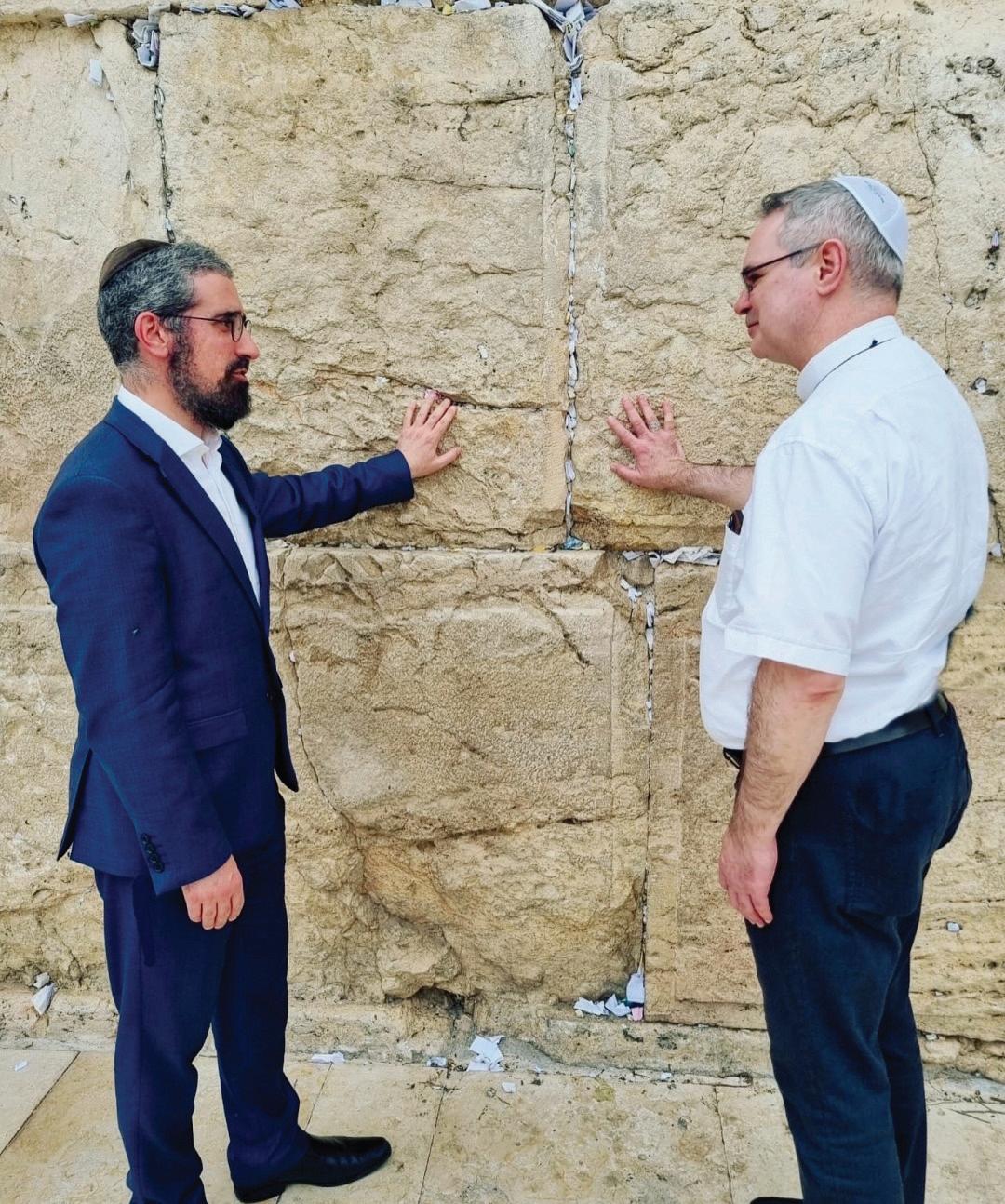
Friday, Nov 22, 2024 8:00 PM
Friday, Nov 22, 2024 8:00 PM
Shabbat ends, Nov 23, 2024 9:04 PM
Shabbat ends, Nov 23, 2024
Friday, Nov 29, 2024 8:07 PM
Friday, Nov 29, 2024 8:07 PM
Question:
For those who
Shabbat ends, Nov 30, 2024 9:12 PM
Shabbat ends, Nov 30, 2024 9:12 PM
I can’t get my head around the rules of Shabbos. It’s supposed to be a day of rest, no? So how can you relax while worrying about breaking some law or another, like opening a packet of chips the wrong way, or accidentally touching the light switch? My vision of a day of rest is sitting on the couch watching the cricket. Or even playing a game of it myself, but then I might rip some grass and that’s considered ploughing …
Friday, Dec 6, 2024 8:13 PM
Friday, Dec 6, 2024 8:13 PM
Shabbat ends, Dec 7, 2024 9:19 PM
Shabbat ends, Dec 7, 2024 9:19 PM
Friday, Dec 13, 2024 8:19 PM
Friday, Dec 13, 2024 8:19 PM
Shabbat ends, Dec 14, 2024 9:25 PM
Shabbat ends, Dec 14, 2024 9:25 PM
Friday, Dec 20, 2024 8:23 PM
Friday, Dec 20, 2024 8:23 PM
Shabbat ends, Dec 21, 2024 9:29 PM
Shabbat ends, Dec 21, 2024 9:29 PM
Answer:

know what I mean. By now, my friend was completely bewildered. He couldn't believe grown adults actually do this.
He started asking questions:
For those who mean the world to you, only the finest will do.
So, you’re telling me that people enjoy throwing leather-bound balls at sticks with a guy holding a plank standing in the way? And if the idea is to have fun, why all the rules? How does the bowler’s arm being straight or bent enhance the experience? Why should the batsman have to worry about being caught?
It was at that point that I said: “Forget this. Just come to the park and we’ll play. You’ll see it is fun.”
You make a good point. What you're saying makes a lot of sense. So maybe you can help me knock some sense into a new friend of mine.
This fellow recently arrived from South America. He heard that Australians are cricket mad and had never heard of the game before. He asked me to explain what cricket is in simple English.
So, I tried to share with him the basics of the game.
Except where expressly stated otherwise, content in The Melbourne Jewish Report is provided as general informations only. The articles in this paper have been contributed by a third party. The opinions, facts and any media content here are presented solely by the author, and The Jewish Report assumes no responsibility for them. It is not intended as advice and must not be relied upon as such. You should make your own inquiries and take independent advice tailored to your specific circumstances prior to making any decisions. We do not make any representation or warranty that any material in the papers will be reliable, accurate or complete, nor do we accept any responsibility arising in any way from errors or omissions. We will not be liable for loss resulting from any action or decision by you in reliance on the material in the papers. By reading the papers, you acknowledge that we are not responsible for, and accept no liability in relation to, any reader’s use of, access to or conduct in connection with the papers in any circumstance. Photographs submitted by individuals or organisations are assumed to be their property and are therefore not otherwise credited. All articles in this paper have received the expressed consent of the author to publish in this paper.
Except where expressly stated otherwise, content in The Melbourne Jewish Report is provided as general informations only. The articles in this paper have been contributed by a third party. The opinions, facts and any media content here are presented solely by the author, and The Jewish Report assumes no responsibility for them. It is not intended as advice and must not be relied upon as such. You should make your own inquiries and take independent advice tailored to your specific circumstances prior to making any decisions. We do not make any representation or warranty that any material in the papers will be reliable, accurate or complete, nor do we accept any responsibility arising in any way from errors or omissions. We will not be liable for loss resulting from any action or decision by you in reliance on the material in the papers. By reading the papers, you acknowledge that we are not responsible for, and accept no liability in relation to, any reader’s use of, access to or conduct in connection with the papers in any circumstance. Photographs submitted by individuals or organisations are assumed to be their property and are therefore not otherwise credited. All articles in this paper have received the expressed consent of the author to publish in this paper.
A guy stands at one end of a rectangular patch of grass or dirt, which is called a pitch or wicket. In his hands, he holds a smooth plank of wood, called a bat. He is called the batsman.
bails. Collectively, they are called the wicket.
At the other end of the rectangle is another player, called the bowler, who holds a ball covered in leather. He runs up and hurls the ball towards the first guy.
Note: he is not allowed to throw the ball. He must keep his arm straight as he releases it. And he must be standing behind a line. If he crosses the line before releasing the ball, the other team gets a run.
could be caught by other players spread around the field. If they catch the ball, he is out. That is also called a wicket.
On the other hand, if he is not caught, he can run to the other end of the rectangle and that scores him one run. But he’d better be quick, because if the ball is returned to the three sticks and the bails are removed before he reaches the other end, then he is out, without scoring.
When spoken in the abstract, the rules of the game sound technical, pedantic and quite boring. But when playing it in real life, it just works. Like notes in a symphony, on paper they are plain black and white, but when you play those notes, the piece comes alive.


Ian Sharp Jewellery Craftsmanship iansharpjewellery
Ian Sharp Jewellery Craftsmanship iansharpjewellery


The Jewish Report; ISSN 2204-4639
The Jewish Report; ISSN 2204-4639
Publisher: The Jewish Report Pty Ltd (ACN 167302981)
Publisher: The Jewish Report Pty Ltd (ACN 167302981)
Distributor: TJR Distribution Pty Ltd ACN 165158029
Distributor: TJR Distribution Pty Ltd ACN 165158029
Comments or suggestions to: editor@thejewishreport.com.au
Comments or suggestions to: editor@thejewishreport.com.au
Article submissions to: www.thejewishreport.com.au/article-submission-guidelines
Article submissions to: www.thejewishreport.com.au/article-submission-guidelines
Advertising: editor@thejewishreport.com.au
Advertising: editor@thejewishreport.com.au
Behind the batsman, on the end of the pitch, are three sticks stuck in the ground, with little wooden toppings, or
Website: www.thejewishreport.com.au
Website: www.thejewishreport.com.au
Printer: Spotpress Pty Ltd
Printer: Spotpress Pty Ltd
He is trying to hit the wicket with his ball. If he does, the batsman is out. So, the batsman tries to stop that happening by hitting the ball with his plank, the bat. But the plank holder must be careful. If he hits the ball in the air, it
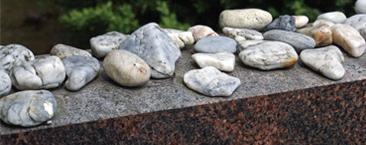

Another important thing: if the ball hits the plank guy’s leg in such a way that had he not been standing there, the ball would have hit the stumps, then he is out (a wicket). Unless, of course, the ball first bounced on the pitch (that is, the patch of grass or dirt) not in line with the stumps. Then it is not a wicket … if you
What’s true of cricket is also true of Shabbos. The rule book sounds intense, extremely detailed and not much fun, but when you live the experience, those rules are notes in a symphony. They create a mood and a mindset, an atmosphere of sacred rest and a space for inner rejuvenation. The power of the Shabbos laws cannot be explained. You just have to try it.


65 Toorak Road, South Yarra, VIC 3141 P: 03 9866 4983 e: sales@iansharp.com.au www.iansharp.com.au
65 Toorak Road, South Yarra, VIC 3141 P: 03 9866 4983 e: sales@iansharp.com.au www.iansharp.com.au
There is no word to describe the feeling of keeping Shabbos properly. So, what do we do when we don’t have the right word? I guess we just call it a wicket.

This the best chocolate malva pudding I have ever made and tasted. I have added an extra chocolate spin to the much-loved dessert, making it ultradecadent and delicious. A fudgy chocolate sauce gets poured over the hot pudding .as it comes out of the oven to soak into the sponge
Ingredients:
200 grams or 1 cup of white sugar
1 large free-range egg
140 grams self raising flour
6 tablespoons cocoa powder
50 grams melted margarine
1 tablespoon white vinegar
250 ml or 1 cup coconut cream
Chocolate sauce:
250 ml coconut cream
100 grams margarine
90 grams sugar or 1/3 cup
100 grams of good quality dark chocolate
Instructions:
Preheat the oven to 180C. Spray a medium sized ceramic oven dish with an oil spray. Using an electric mixer, beat the egg and sugar on high for about five minutes, until pale and fluffy.
In a separate bowl, sift or whisk the flour and cocoa together. Melt the butter in a microwave and then add

Friday, Apr 25, 2025 5:22 pm
Shabbat
May 9, 2025
ends, May 10, 2025
May 16, 2025
Shabbat ends, May 17, 2025
Except where expressly stated otherwise, content in The Melbourne Jewish Report is provided as general informations only. The articles in this paper have been contributed by a third party. The opinions, facts and any media content here are presented solely by the author, and The Jewish Report assumes no responsibility for them. It is not intended as advice and must not be relied upon as such. You should make your own inquiries and take independent advice tailored to your specific circumstances prior to making any decisions. We do not make any representation or warranty that any material in the papers will be reliable, accurate or complete, nor do we accept any responsibility arising in any way from errors or omissions. We will not be liable for loss resulting from any action or decision by you in reliance on the material in the papers. By reading the papers, you acknowledge that we are not responsible for, and accept no liability in relation to, any reader’s use of, access to or conduct in connection with the papers in any circumstance. Photographs submitted by individuals or organisations are assumed to be their property and are therefore not otherwise credited. All articles in this paper have received the expressed consent of the author to publish in this paper.
The Jewish Report; ISSN 2204-4639
Publisher: The Jewish Report Pty Ltd (ACN 167302981)
Distributor: TJR Distribution Pty Ltd ACN 165158029
Comments or suggestions to: editor@thejewishreport.com.au
Article submissions to: www.thejewishreport.com.au/article-submission-guidelines
Advertising: editor@thejewishreport.com.au
Website: www.thejewishreport.com.au
Printer: Spotpress Pty Ltd
the vinegar. Then add that to the batter. Whilst the mixer is still going, alternate between adding the flour/cocoa and 1 cup coconut cream until combined. Pour the batter into a greased baking dish approximately 20 centimetres in diameter.
Spray one side of a piece of foil well with oil, cover the pudding and bake for 45 minutes. The pudding is ready when it has risen and is springy to the touch. While the Malva pudding is baking, make the chocolate sauce. Place all the ingredients into a double boiler pot or into a bowl over a small pot of boiling
water. Stir until the sugar has dissolved and the chocolate has melted. You should have a smooth warm sauce. As soon as the malva pudding comes out the oven, pour over three quarters of the sauce. It will seem like a lot, but soaks in. Save the rest to serve warm with the pudding.
Serve chocolate malva with vanilla ice cream or fresh whipped cream.
Alan Bender is head chef at Soul Gourmet. To find out more, go to https:// soulgourmet.com.au

Jewish Answers: SHTIEBEL and SHTIEBELS. Here is a list of some common words (“yes”, we know there are more words in the dictionary that can work, but these words are common to today’s vernacular): BEETLE, BEETLES, BEETS, BELITTLE, BELITTLES, BELLIES, BELLS, BESET, BESETS, BESTS, BILLS, BISSEL, BITES, BLESS, BLESSES, BLISS, BLITHE, LIBEL, LIBELIST and LIBELISTS.
Questions/comments, please email Yoni at koshercrosswords@gmail.com Crossword answers
Harry Potter is a global cultural phenomenon.
It started with what became the most successful book series in history (more than 600 million sold).
Then, it transformed into one of the highest grossing film franchises (with a take of upwards of 12.75 billion Australian dollars for the eight movies).
Further, the theatrical production Harry Potter and the Cursed Child has taken in excess of 1.65 billion Aussie bucks at the box office.
With such stratospheric numbers, you might think that anything with the Harry Potter moniker would be a licence to print money.
But the truth is, as with anything new, even if you start with a highly reputable brand, to achieve success you still have to tell a compelling story so it excites an audience.
Further, because of the aforementioned accomplishments, the pressure is well and truly on any fresh Harry Potter material to live up to the hype.
So, I was keen to see whether the Harry Potter: The Exhibition would meet expectations.
The first iteration of the travelling exhibition, featuring props, costumes and artefacts, opened in Chicago in April 2009. It moved to various locations around the world, finishing in Lisbon in March 2020.
Then, a new iteration was launched in Philadelphia in early 2022.
An entertaining psychological thriller, Drop involves menacing trolling in the most unlikely of circumstances.
Violet (Meghann Fahy) is a widow and psychologist with a five-year-old son, Toby (Jacob Robinson).
She is still traumatised by the domestic violence she experienced, to which Toby was privy.
Since her husband died, she hasn’t been on a date, but over the past three months she has been speaking to a photographer and now they have agreed to meet.
Violet is clearly nervous.
Her sister, Jen (Violett Beane), comes over to babysit Toby and Violet heads to a swish, high rise, fine dining Chicago restaurant with killer views.
Thirty-two-year-old Henry (Brandon Sklenar) has been the mayor’s photographer for the past five years and the former seems like a good guy.
After contacting Violet to say that he will be a few minutes late and asking her to wait at the bar, she receives a mysterious message from someone she doesn’t know.
Once Henry shows and they sit down at their table by the window, she gets bombarded by more messages, known as “drops”.
They include threatening the life of her son if she doesn’t adhere to the texter’s demands.
At first, Violet shows her date that she is receiving unwanted online attention and he dismisses it as a prank.
But once the texter tells her to keep her mouth shut or else, she tries to navigate
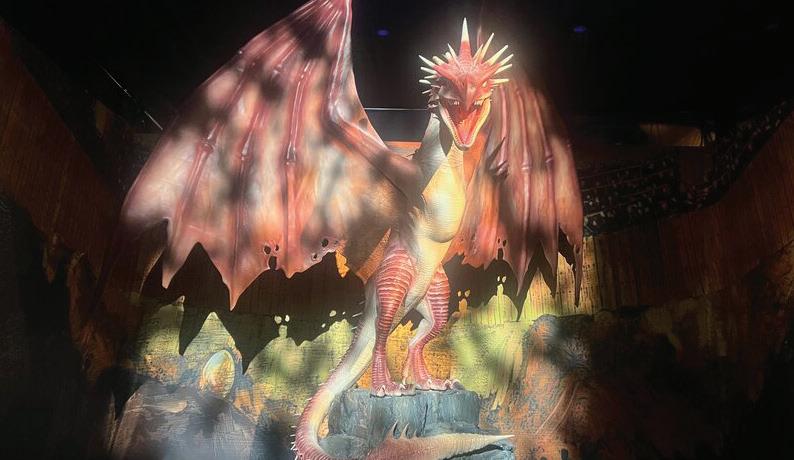
Again, it is touring, with concurrent productions in the USA, Europe and, now, Australia.
In fact, this is the first time Harry Potter: The Exhibition has appeared in the Southern Hemisphere.
The interactive exhibition covers 3,000 square metres (in other words, it is big) and encompasses 25 rooms (otherwise known as galleries).
Importantly, it is personalised. At the outset, through a lightweight wristband you choose a wizarding profile, which helps shape your experience.
The wristband interacts with Golden Snitch medallions dotted around the exhibits.
You collect points for your Hogwarts’ house – Gryffindor, Hufflepuff, Ravenclaw
and Slytherin – as you complete activities. You get up close to many original costumes and props that went into the making of the films.
What struck me immediately was the level of detail that goes into the costuming. At this point, I should mention that in addition to the Harry Potter films, the Fantastic Beasts spin off series is also featured.
The exhibition has been designed to be explored through sight, sound, touch and smell.
Story boards outline the exhibits you are seeing and where characters fit into the franchise.
A short film introduces you to the experience and throughout your journey you get to see cinematic excerpts as well

the date, while doing what this stranger wants her to do.
The texter appears to be tracking her every move and listening to everything she is saying.
It is quickly established that the drops she is receiving are coming from within the confines of the restaurant, but she can’t put her finger on who the perpetrator is.
The texter doesn’t just have an axe to grind with Violet, but with Henry too.
There is desperation and tension, as the situation goes from bad to worse.
So, who is the texter, what are they after and why? That becomes clear as the plot develops.
Drop is a high stakes cat and house game, with all in the restaurant – patrons and staff – under suspicion.
Among them is an older man on a blind date, named Richard (Reed Diamond) who Violet meets at the bar, and charming bar worker Cara (Gabrielle
as a portrait gallery, some of which come to life. Behind glass is a first edition of the first book in the series, Harry Potter and the Sorcerer’s Stone, published in the UK in 1997. There is a room with wands, you can cast a spell or follow a spirit guide.
You can be teleported and enter an enlarged red phone booth, the visitors’ entrance to the Ministry of Magic, and practice your Quidditch skills. The evocative displays also present many great opportunities for happy snaps.
None is better than Harry’s cupboard under the stairs at the Dursley family home, before the boy wizard leaves for Hogwarts School of Witchcraft and Wizardry.
Take a fireside seat in Hagrid’s giant armchair or lift a plant in the Herbology greenhouse. The choice is yours. Read, play and learn. It really is a superbly curated exhibition with much to see and do.
I say that as someone with but a passing interest in Harry Potter. It got me genuinely excited. To see and experience it all, I would recommend you allow yourself at least 90 minutes.
You also have the chance to purchase an audio guide to work your way through the exhibition.
You exit via a shop featuring hundreds of high-quality pieces of Harry Potter merchandise. So, you can buy something by way of a keepsake, if that tickles your fancy.
Harry Potter: The Exhibition is a beauty –I’d say for all ages five and up – a creative wonderland of witchcraft and wizardry, located at 62 Dawson Street, Brunswick.
To find out more and to buy tickets, go to: https://harrypotterexhibition.com
Ryan). Matt (Jeffrey Self) is an awkward, oversharing waiter, on his first day on the job and Lindy (Sarah McCormack) is his boss, the restaurant’s host.
Phil (Ed Weeks) is the not backward in coming forward piano player, while Connor (Travis Nelson) is a fellow diner Violet repeatedly keeps bumping into.
Meanwhile, the texts accompanying the drops, which help ratchet up the intrigue, are writ large (literally) on the screen.
The conceit for the movie was inspired by real life, when one of the producers and his friend fell victim to a series of drops while on holidays with family overseas. Their experience translated into a script from Jillian Jacobs and Christopher Roach.
I appreciate the guessing game they have created. Due to the inherent danger, it is edge of your seat stuff. Like with many films of this genre, it pushes the
envelope. To fully enjoy it, you would be well served to suspend belief, especially as Drop reaches its conclusion.
Speaking of that, in terms of the action, the final scene in the restaurant is certainly memorable.
Director Christopher Landon does a good job working with the incendiary material at his disposal. He is the one ultimately responsible for tightening the strings.
The idea is that Violet seems destined to run into a dead end every time she tries to find a way out of her invidious predicament.
I thought the gorgeous restaurant setting with sparkling nighttime views was the perfect backdrop.
And then we have the acting talent, led by Meghann Fahy. I really like what she had to offer. She plays vulnerable and on edge well.
Brandon Sklenar is the calm voice of reason as Henry, who is taken on a roller coaster ride by a woman he likes, but becomes unsure about.
Violett Beane gives a spirited performance as sister Jen, while there is warmth about Gabrielle Ryan as the bar worker.
Jeffrey Self’s deliberately over the top showing as the gay waiter is impossible to ignore, while each of the other actors also make their mark.
In fact, I thought that overall the casting choices were strong, making Drop a wild, playful, nerve-wracking and deadly ride.
Rated MA, it scores an 8 out of 10.
For more of Alex First’s reviews, go to https://www.itellyouwhatithink.com
